









































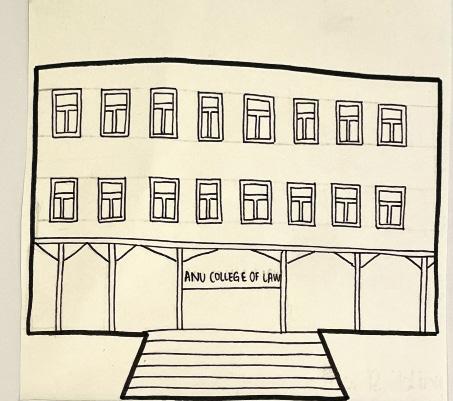







Acknowledgement of Country



Peppercorn would like to acknowledge the Ngunnawal and Ngambri people as the traditional owners of the land upon which our publications are written and distributed. We would also like to acknowledge our neighbours; the Gundungurra people to our north, the Ngarigo people to our south, the Yuin people on the south coast and the Wiradjuri people of greater inland New South Wales. We acknowledge their elders – past, present, and future – and the elders and first peoples from all nations across the continent.




This was and always will be Aboriginal Land and we recognise that sovereignty was never ceded.
Statement on Historical Wrongs

Peppercorn also recognises the historical wrongs perpetrated against Aboriginal and Torres Strait Islander peoples.


Peppercorn acknowledges that colonisation is ongoing and racist structures continue to perpetuate the power imbalance inherent within this nation’s cultural, economic, and political institutions. Policies such as the Stolen Generations are not historical, but rather sustained oppression, paternalism and cruelty seen in the continued removal of Indigenous children from their homes per year.

As the ANU LSS’ publication, we cannot ignore the role that our legal system plays in entrenching systematic failures and injustices to Indigenous peoples. Namely, by incarcerating Indigenous Australians at the highest rate in the world and the continued separation of families and communities, the system in which we live and work is continuing a colonial genocide. As law students, we must all undertake to change the racist operation of our legal system and the views within it.
Until an Indigenous voice to speak on their affairs and Country is heard; until there is a treaty; until truth is told and the historical and ongoing pain of those whose land on which we profit from is recognised – there is no justice in our Country.
3 |
“My star sign is Gen-Z with a Milennial Rising”
Aisha Collins Magazine Director
“ It’s the constitution, its Mabo, it’s justice, it’s law, it’s the vibe and ahh, no that’s it, it’s the vibe. I rest my case




- Denis Denuto (The Castle)”
Ella McGrath Art Director





“Get a grip; people hate sissies. No one’s ever going to shag you if you cry all the time - Karen (Love Actually)”
 Callum Florance Editor in Chief
Maximus Sandler Secretary
Callum Florance Editor in Chief
Maximus Sandler Secretary
“Let them hate. Just make sure they spell your name right. - Harvey Specter, (Suits).”
Lara Mckirdy Content Editor, Reporting Director






“breaking news…this week I broke my toe on a bed draw in my on campus dorm room. Stay tuned for my extensive investigation into why on campus rooms are unliveable and dangerous environments.”

“Do you think she woke up one morning and said ‘I think I’ll go to law school today’? - Professor Callahan (Legally Blonde)”
 Adhina Jose Content Editor
Mel Megale Content Editor
Adhina Jose Content Editor
Mel Megale Content Editor
Letter from the editor








Historical Wrongs
2 - Team and Contributors
4- Letter from the Editor



5 - President’s Welcome
6 - Contents



8. COMMUNITY
9. Pepper Grinder – Online or sit-down law exams for 2023?
● Callum Florance
12. Go get it in Jakarta – Your guide to doing a short course in Indonesia
● Mike Zhou
14. Pepper Grinder – Our year to confront the justice system
● Lara McKirdy
16. In Law – Interview with Scott Phillips
● Callum Florancew
20. Pepper Spray – Another day another SAltled protest
● Lara McKirdy
22. Peppermint – ANU Law Revue
● Callum Florance
25.
CREATIVE
26 Chilli Pepper – Spicy solutions to student problems
● Chilli Pepper
28. Great expectations – Dreams of a law student
● Adhina Jose
30. Laugh, Pronounced ‘Law’ – Third Edition
● Chilli Pepper
32. Pepperoni Observational News Corp
- First Edition
● Chilli Pepper
35. POLITICS AND OPINION
36. It’s Time, To Get It Right – An open letter to our learned political hacks
● Raf Priest
38. An Inconvenient Truth... Again?
● Adhina Jose
42. A Voice for the Voiceless – Review of ‘Broken: Children, Parents and Family Courts’
● Lara McKirdy
44. Bishop & Schmidt by Balenciaga –Where AI and memes meet
● Callum Florance
46. ACADEMIC
47. Incoherence and Indeterminacy - The Impact of Family Violence in Property Disputes (Social Justice Essay Competition 2023 First-Place Winner)
● Phoebe Tulk
54. Deifying the Dirtbag – Why we love to watch terrible lawyers

● Liam Sandison
57. Ours to Lose and Never Regain – The erosion of human rights in the face of Australia’s exceptional counter-terrorism measures
● Myka Davis

 Art by Rose Dixon-Campbell
Art by Rose Dixon-Campbell
COMMUNITY


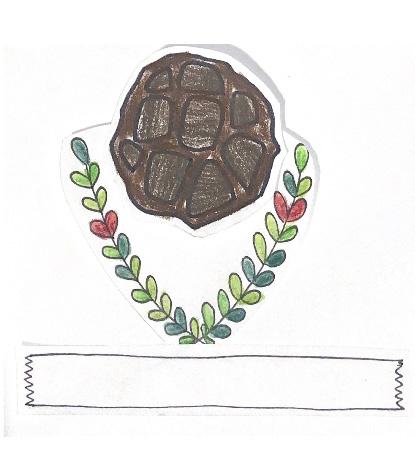 Art by Ella Mcgrath
Art by Ella Mcgrath
Pepper Grinder:


Online or Sit-Down Law Exams for 2023?
By Callum Florance
Pepper Grinder is a Peppercorn series providing news and reporting relevant to ANU law students via Peppercorn’s Facebook Page and biannual magazine. If you have any interesting stories that you want to share with the ANU Law Community, get in touch!
The COVID-19 pandemic has proved to educators and workplaces alike that more and more of our working existence will happen online. Considering that we live in an online and technologically advanced world, is the ANU College of Law (CoL) really going to shift exams away from the online, take-home model? Is the stomach-churning, anxiety-inducing, anachronistic pen and paper exam model making a comeback for 2023? Here at Peppercorn, we have brought out the Pepper Grinder to update you on whether JD and LLB students will have online exams for 2023.
TLDR: In September 2022, the ANU CoL were waiting to confirm its examination delivery modes from the university executives for 2023 and will notify students once it has made a decision. As of February 2023, this position has not changed.

In-person teaching and learning is back
On 20 July 2022, the ANU College of Law (CoL) emailed law students that it was shifting away from a preference for hybrid (pre-recorded and live online as well as in-person) teaching and learning for 2023. The hybrid format initially came about as a response to the uncertainty created by the COVID-19 pandemic, with convenors effectively using the in-built flexibility of a hybrid model to transition between online and in-person teaching and learning modes whenever circumstances required. This has now changed. The CoL’s preference is now clearly set on in-person teaching and learning for 2023. For LLB students, this shift already became apparent in Semester 2, 2022.
Live online teaching and learning modes were no longer available for LLB students, with some pre-recorded online options still included. In the July 2022 email, LLB students who expected to study online for their degree were told that ‘it would be best to explore online delivery options at other institutions’. For JD students, this shift from ‘all remote learning options for compulsory courses will conclude... at the end of 2022’. Electives may still have an online option, but some electives may ‘be delivered on campus only’. The email summarised: ‘[a]s per university policy, all lectures and some content in elective courses will continue to be recorded; however, the program will no longer have live online options available for any course’. Juris Doctor Online (JDO) students were provided with the same advice as LLB students, noting that ‘it would be best’ for students wanting to study online ‘to explore online delivery options at other institutions’.
How are exams impacted by a shift to in-person teaching and learning?
We have heard anecdotal arguments about student experience being impacted by studying online, with the on-campus experience being heralded as the epitome of a so-called ‘proper’ university experience (i.e., a Group of Eight university experience). That probably makes sense for high school students who finished school online and are wanting more from their education, including making friends and experiences on-campus. In this case, in-person teaching and learning may be the preferred approach for undergraduate students (at least for those whose parents can afford to put them up at a residential college, which shows
a clear preference/incentive for a certain student demographic) .But what about in-person exams? Those same wistful anecdotes fail to include the sheer misery tearful students remembering to bring everything into the exam hall except a pencil, taking sips from clear and label-less drink bottles as their mind empties. I am not sure this belongs in the epitome of a so-called ‘proper’ university experience, mainly just the pity of it.
Take-home exams give students the opportunity to find and establish a calming space to conduct their exam in, the room that works for them in their shared house, their family’s house, or elsewhere. For those who need additional support or a private room, the university should always cater to their needs and provide that support and space.
If the point is to cosplay working as a lawyer, then engaging in legal analysis under pressure on your computer is at least somewhat closer than sitting in a stuffy exam hall with a pencil and paper writing at 50 (big and incomprehensible) words per page. Also, the phrase ‘open book exam’ does not quite fit the bill if you can hardly keep more than one book open on the examination desk.
Conclusion?


Overall, the return to in-person teaching and learning should not also mean a return to in-person exams. For decision-makers, please preference reality over any anachronistic reminiscing on (pre-COVID) ideals of the so-called ‘proper’ university experience. Is the big takeaway from COVID-19 that students are crying out for an on-campus experience that includes in-person exams? Does preferencing on-campus over online teaching and learning also show a bias towards a certain demographic of students in the upper SES band who can afford to relocate interstate? In this case, maybe the pen is less mightier and equitable than the keyboard.


Response from the ANU College of Law on in-person exams for 2023:
In writing this article, the ANU CoL was contacted for a position. I will include the questions and responses below:

September 2022: I understand ANU law students will be expected to move comprehensively from online to in-person from 2023. Is the ANU College of Law intend ing to move all final examinations from online (takehome) to in-person (sit-down) from this same period? Or is the mandatory shift from online to in-person limited to modes of learning via lectures, seminars and tutorials, rather than other course aspects like examinations?
• For Semester Two, 2022 all examinations for the ANU College of Law will remain online. In regards to examination modes for mid semester and final examinations for 2023, this is a decision that will be made by the executive of the university and as soon as we have clarity, our student cohorts will be advised.
• The LLB and JD programs will be delivered on campus from Semester One, 2023, noting that the LLB largely returned to on campus learning during the second half of 2022. There are a small number of LLB elective courses that will remain online again for 2023 due to Convenor location. As per university policy, all lectures and some content in elective courses will continue to be recorded; however, the program will no longer have live online options available for most courses.
• Pos tgraduate online elective course options for JD students will remain available in 2023, however, some elective courses will be delivered on campus only. As per university policy, all lectures and some content in elective courses will continue to be recorded; however, the program will no longer have live online options available for any course. Of note, 2023 is also the final year of the JD Online teachout.
LAWS6244 Litigation and Dispute Management will have the final option of online delivery in Semester One, 2023 with LAWS6205 and LAWS6207 having an online option for the final time in Semester Two, 2023.

• Our postgraduate programs will continue to have online learning options in place for 2023. There will be both on campus and online options available; however, please note that some courses will only be available on campus and some will only be offered online. It is recommended to check our ANU College of Law Course Search to confirm the study mode.
September 2022: What are the policy reasons for why the ANU College of Law is shifting towards mandatory in-person learning (and/or examinations as well)?



• The ANU College of Law has returned the LLB and JD programs back to largely on campus delivery to ensure alignment with the universities preference for the on-campus experience. Both the Vice Chancellor and the university Senior Executive Group are committed to providing students with an exceptional on campus experience and the ANU College of Law fully supports in person delivery for both the LLB and JD programs.
Update from ANU College of Law in February 2023:
• [This is] all still current information as no decision on examinations has been made as yet. As soon as we have clarity, examination delivery mode[s] will be communicated to our students.
Go get it in Jakarta: Your guide to doing a short course in Indonesia
B y Mike Zhou
Jakarta. It’s wet season. Someone is down with typhoid. A taxi from the airport to the city took just over four hours. A city that lacks footpaths, and in fact is quite literally sinking by 4.9 cm per year. Are you sold?
If so, that was easy. If not, I’m going to try to twist your arm.
Mie goreng – yes the ones you eat as a midnight snack. Heard of it? That’s Indonesian.
The country of Bali . Heard of it? That’s actually a province in Indonesia.
Bintang – yes the beer. Heard of it? Guess what, that’s also Indonesian.
Over the summer of 2023, I was lucky to be able to go to Jakarta, Indonesia to do a six-week short course with the Australian Consortium for ‘In-Country’ Indonesian Studies (ACICIS). The program consisted of two weeks of intensive seminars and language classes, followed by four weeks of placement at a host organisation. The course was a lot of fun and an amazing opportunity to gain practical legal experience abroad, as well as learning about Indonesian culture and language. But how was Jakarta?
Jakarta is a wild city. With a population of over ten million people, it’s truly a city that never sleeps and one that epitomises the hustle and bustle of a metropolis. It’s a city with a mix of historic cultures, one that has developed and modernised. When you visit Jakarta, you can definitely see the remnants and parts of the colonial Dutch that has been maintained. While at the same time, Jakarta is a modern city – with skyscrapers everywhere you look. As Alicia Keys sums up New York in Empire State of Mind, the same can be said about Jakarta – it’s a “concrete jungle where dreams are made of”.
Dreams are made in Jakarta, as the food is to die for. Not only does the food slap, but it’s so damn cheap. I could get breakfast, lunch and dinner for under $10 a day. Whether you are vegetarian or love your meats, there are plethora of food options available to you.
Art by Ella Mcgrath
Whether it be satay, rendang, nasi goreng (or nasi goreng tapi tidak pakai daging – for vegetarians), gado-gado, Jakarta is a genuine food heaven – one where I implore everyone to go try it out. I know travelling and doing a short course overseas can be expensive. However, there are a range of different avenues for financial assistance to help you. Whether it be through the New Colombo Plan Mobility Grant, which is available to Australian citizens, or though obtaining an OS-HELP loan, there are various ways to help you get around Indonesia and live your absolute best life.
If I’ve twisted your arm and if you’re interested in visiting Indonesia through a short course, here are my top three tips:
1. Try something different

Whether it be trying different foods or participating in traditional activities (like making batik), I’d urge you to embrace the culture. It’s a culture that truly is unique, and one that’s hard to find back in Canberra. Take a step outside your comfort zone and embrace it.
2. Don’t be scared
It can be a nerve-racking experience going to a foreign country by yourself – I’d be lying to say if I didn’t have butterflies in my stomach. However, what you’ll find is that everyone you meet are so extremely friendly. Whether it be the locals or the other students doing the short course with you, everyone is so approachable and you can definitely make new life-long friends.
3. Value “me-time”
It’s so easy to get caught up in the madness of Indonesia. It’s so important to take care of yourself and to ensure that you do “put yourself first”. Jakarta can be extremely humid and if you don’t look after yourself, you can crash really fast. Make sure you put some time aside for yourself – self-care is integral.
I think it’s time for you to go enjoy your new favourite Indonesian meal with an es teh manis (iced tea) or a nice cold Bintang beer.

Pepper Grinder:

Our year to confront the justice system

In Conversation: Improving the Treatment of Sexual Assault Survivors in the ACT
By Lara McKirdy
Pepper Grinder is a Peppercorn series providing news and reporting relevant to ANU law students via Peppercorn’s Facebook Page and biannual Magazine.
CW: Sexual assault, violence, trauma.
On 6 March 2023, I attended In conversation: improving the treatment of sexual assault survivors in the ACT 1 which, after two years of attending ANU CoL events, was held in a room of maskless attendees. This was one of the first events by the ANU College of Law (CoL) that saw a return to normal since the start of the COVID-19 pandemic. There was a sense of normalcy in being present in a room of real, tangible people and not some cold, online meeting room of black screens. The female-majority audience conveyed a high level of reverence in the presence of such accomplished and impactful female lawyers. However, the lack male attendees emphasised the one-sided issue at the heart of the discussion. This will be an important year - 2023 marks the promise for significant change regarding the incidence of sexual assault which Australia has been needing to confront for decades.
Footnotes
1. Jehanne Teo, “In Conversation: Improving the Treatment of Sexual Assault Survivors,” ANU College of Law (The Australian National University, March 3, 2023), https://law.anu.edu.au/event/ conversation/conversation-improving-treatment-sexual-assault-survivors.
2. ANU College of Law, “Anu College of Law Visiting Judges Program,” ANU College of Law (The Australian National University, January 1, 1970), https://law. anu.edu.au/visiting-judges-program..
3. ibid
4. Christopher Knaus, “Bruce Lehrmann Retrial: Act Government Seeking to Urgently Reform Video Evidence Loophole,” The Guardian (Guardian News and Media, November 17, 2022), https://www. theguardian.com/australia-news/2022/ nov/17/bruce-lehrmann-retrial-act-government-seeking-to-urgently-reform-video-evidence-loophole.
5. Rachel Riga, “Stealthing to Attract Maximum of Life in Prison under New Laws to Be Introduced next Year,” ABC News (ABC News, November 23, 2022), https://www.abc.net.au/news/2022-1123/qld-rape-sexual-assault-stealthingnow-illegal-under-new-laws/101629352.
6. Dominic Giannini, “Sexual Consent Laws Go under Spotlight,” The Canberra Times (The Canberra Times, November 29, 2022), https://www.canberratimes. com.au/story/8000925/sexual-consent-laws-go-under-spotlight/.
The event:
The ANU Visiting Judges Program is an initiative at the ANU College of Law that provides students with ‘the opportunity to engage and interact with judges and their perspectives on working in the law’ 2. Students read a lot about judges and rarely interact with them, so being able to ‘identify more clearly what judges do, their journeys through the profession, and the life lessons that they have brought to the practice of law and judging’ is a great opportunity for ‘empowering and inspiring’ ANU law students 3 .
As part of the ANU Visiting Judges Program, the Hon Helen Murrell SC and former ACT Senior Prosecutor Katrina Marson took part in a discussion concerning the treatment of sexual assault survivors in the judicial system in the ACT. This discourse was especially relevant in light of a recent high-profile case 4, which have set the tone for 2023 as the year to reckon with the institutional and systemic failures of our justice system.
The speakers:
The Honourable Helen Murrell SC, the former Chief Justice of the Supreme Court of the ACT, was the first woman to be appointed Chief Justice after an illustrious career overseeing numerous courts and tribunals. Notable among these is her former role as Deputy Chairperson of the New South Wales Medical Tribunal and also first Senior Judge of the Drug Court of New South Wales. During her time as a District Judge in New South Wales, her Honour personally witnessed the low rates of sexual assault convictions, contributed to by harsh cross-examination and the consistent ‘failure’ of complainants to provide evidence that could be trusted ‘beyond reasonable doubt’.
Katrina Marson is a criminal lawyer and advocate for comprehensive sex education and for law reform surrounding sexual violence and assault. Formerly employed in the ACT DPP specialty family violence and sexual offences units, Katrina has seen firsthand the inaccessibility of the justice system for victims of sexual assault and sexual violence due to re-traumatisation. In 2018, Katrina found new purpose in her appointment as Director of the team implementing the criminal justice recommendations of the Royal Commission into Institutional Responses to Child Sexual Abuse in the ACT.
Memorable among the sea of recommendations was the use of investigative interviews as evidence in chief, and also improving police responses to reports of historical child sexual abuse.
Moderating the discussion was Professor Lorana Bartels, who is a Professor of Criminology in the Centre for Social Research and Methods at ANU and an Adjunct Professor at the University of Canberra and University of Tasmania.
The discussion:

The discussion stepped the audience through the pre-trial to trial process. The pre-trial process sees complainants who are new to the prosecutorial process attempt to navigate a labyrinth of a system. Saying such an experience is difficult would be an understatement. Furthermore, 1 out of 10 sexual assaults are reported, and approximately 10% of those reported result in convictions.
While the engagement of prosecutors in familiarising the complainant with the legal system is adequate, policy should be enacted to ensure all prosecutors have adequate contact with complainants not only pre-trial but also post-trial to better understand the complainant’s court experience and to establish measures to better that experience. The practice of prosecutors should also enhance focus on managing complainant expectations considering the extremely low rates of prosecution. This could be executed in a way that prepares complainants for a long process that may cause re-traumatisation by communicating the broad purpose of the justice system. That is, to rehabilitate those guilty of criminal offences justly and in proportion to the offence committed.
Coming to the trial process, there was an emphasis on using the recorded interview of the complainant as evidence-in-chief. The idea behind this recommendation is that it replaces the complainant from having to again recall the events of their traumatic experience thereby avoiding re-traumatisation in that instance. As you may recall, this idea was a standout recommendation of the most recent Royal Commission into Institutional Responses to Child Sexual Abuse in the ACT. While special measures are already in place during the trial process to prevent re-traumatisation, such as the giving of evidence by the complainant from a separate room, it was argued that more radical improvements are necessary, notably moving the complainant’s cross-examination to earlier in the trial process. However, it remains to be seen exactly how the fundamental succession of trial proceedings can be altered.
It was agreed that the cross-examination of the complainant was the most common issue in trials where the jury could not be satisfied on the evidence ‘beyond reasonable doubt’.
It was said here that the nature of the defence counsel’s questioning has long been to blame. While the culture of cross-examination has since imposed responsibility on defence barristers to ask responsible and applicable questions to not humiliate the witness, it was noted that barristers often do not fulfil this responsibility and rely on the judge to intervene in the line of questioning to prevent further distress to the witness.
The impact
While this discussion did not explore the effectiveness of sexual assault laws in determining fault, it is especially relevant in light of the implementation of affirmative consent laws in New South Wales on 1 June 2022, as well as the passing of affirmative consent laws in the ACT in November 2022 which are yet to come into effect 5 . Of course, I have to pay homage to my home state of Queensland, which passed legislation criminalising “stealthing” in November 2022 - although this has yet to come into effect. This multistate adoption of affirmative consent models instigated the Senate to refer an inquiry into the current proposed sexual consent laws in Australia to the Legal and Constitutional Affairs References Committee with findings due 30 June 20236 . Stay tuned for Issue 2 coming next semester.
The STOP Campaign, a Canberra-based organisation working toward tertiary communities free of sexual violence, supports the ACT consent law reforms as a positive step toward preventing sexual violence by improving the reporting rates of sexual assaults and also conviction rates. The main objective of these reforms are better outcomes for survivors in our justice system. However, given that a key part of the Senate inquiry is investigating the operation of consent laws in different jurisdictions where they apply, concern has been expressed by some legal experts that the consent laws will not impact conviction rates. Like Katrina Marson, the same experts emphasise that reforming societal attitudes in respect of misconceptions about consent and sexual assault through comprehensive sex education may be more likely to have a greater impact on mitigating sexual assault and sexual violence in combination with affirmative consent laws.
The confrontation
2023 is not only a return to normal, but an opportunity for change. The systemic issues in our justice system that affect victims and survivors of sexual assault and sexual violence are pervasive and at long last must be addressed. Too many lives have been ruined, and too many voices have been drowned out by archaic trial processes and a legal system that has false notions of vulnerability and trauma tied to truth and fact. Something has to be done. 2023 is the year to confront the justice system.
In Law: An interview with Scott Phillips


























































 By Callum Florance
By Callum Florance












In Law is a Peppercorn series that features an interview with a practicing member of the Australian legal community. For this edition, I have the pleasure of interviewing Scott Phillips, a partner at Arnold Bloch Leibler (ABL).
Scott works in mergers and acquisitions but has a broad practice that spans shareholder activism, equity capital markets, joint ventures, start-ups and traditional M&A. Originally from New Zealand, Scott got his law degree at Otago University before spending a year and a half working for Bell Gully in Auckland and then 11 years at King & Wood Mallesons in Sydney. He has been at ABL for 5 years and has been lucky enough to work with and learn from a long list of distinguished lawyers and clients and work on some of Australia’s most complex and award-winning transactions .
Q1: What do you credit as the reason why you decided to pursue a career in law?
I grew up in a small farming town in regional New Zealand and while I was an ambitious kid, I was very naïve when it came to what future career opportunities might be available to me. My brother and I were the first generation in our family to study beyond high school and I didn’t know anyone who had gone on to work in the corporate world in a big city! My focus throughout high school was initially on medicine or law, primarily because they were the most difficult fields of study to get into and, in my mind at least, carried the most prestige. Once I got to Otago University, my horizons were expanded enormously. I had the privilege of being introduced to a wide network of current and former students and lecturers who were doing all manner of interesting things at university and out in the world.
I loved studying law but it wasn’t until a summer holiday job at one of New Zealand’s leading law firms that I decided I really wanted to pursue it as a career. The ability to apply the skills and knowledge gained at law school in creative ways really appealed to me.
Q2: What was your law school experience like, and do you have any fond recollections of your time at law school?













I think the law school community was one of the most interesting and vibrant groups of people I have ever had the privilege of being part of. It was a very diverse group in some ways. There were those who came from families with multiple generations of lawyers and judges and others who grew up on farms. Students from big private schools and others from remote public schools. Yet everyone seemed to be very similar in some really important ways. The students were highly intelligent, thought about things deeply and there was a real sense that we were learning something special. We were also budding lawyers, so of course we were constantly arguing and challenging each other.
Q3: What opportunities would you recommend that law students should seek out, including ones that you experienced/wish you experienced in hindsight?
Do not take your relationships with your peers for granted. It is easy to get myopically focused on academics and just surviving law school. But if your cohort was like mine, the most valuable part of the experience may be the networks and friendships you make along the way.
I know that’s all pretty cliched, so for some practical advice: find excuses to spark up conversations with other law students, join clubs, enter competitions. Go to lectures in person! The juice is worth the squeeze.
Graphics by Callum Florance
Aside from life-long friendships, this will give you a deep pool of experience to tap into as you move into post-uni life and try to “bluff” your way through the real world. How do law firm interviews work, what’s the difference between all these firms, do I even want to work in a law firm, what else can I do, how do I get an associateship, do law firms value masters degrees, will people judge me if I eat KFC at my desk? Spoiler: don’t eat KFC at your desk in a law firm – hide in the back of the restaurant while you nurse your hangover like a normal person.
Q4: What does participating in law societies contribute towards a career in law? Is there a trade-off between participating in a law society and participating within the firm?
I’ve never really participated in the law societies that I have been a member of. I can’t speak for all firms or all paths but based on what I know, I’d say as a young lawyer in a large commercial law firm 1) you are going to be working much harder than you did at law school and at times you will just be surviving and 2) because of that, the bar to distinguish yourself is surprisingly low. Write a journal article, participate in a law society, organise a social function at your firm, pick a niche firm precedent document and work really hard to improve it. Do one of these things and do it well and people will notice. Little things like this can have a big impact on the perceptions of you within a law firm. In the scheme of a year’s work, spending another 20 hours working on a side project is both nothing and a herculean undertaking. Just check with someone a few years more senior than you before you pick your project to make sure it is going to be noticed and valued and that you will get credit for it.

Q5: How have you managed the inherent tension in the legal community between comradery and competition (e.g., placing the court above clients, vying for positions whilst maintaining friendly connections with your fellow lawyers, etc.)?
There is much less tension and competition among lawyers than I thought there would be. I work in a transactional practice which means that most of the time my clients engage me to help them get a deal done. So even if our clients have conflicting interests, the respective lawyers understand and respect each other’s role. I’ve very rarely experienced point scoring or open hostility between lawyers. Between clients, absolutely! But clients hate it when they think their lawyer is just trying to ‘out-lawyer’ the other side and for that reason most lawyers either have that attitude beaten out of them early on or they don’t survive.
Q6: What are some of your key takeaways from your experience working in law firms, including the best ways to succeed and thrive?
I think that a career in a commercial law firm is a very low risk proposition. I don’t mean that you are guaranteed to succeed. What I mean is that your ability to succeed is almost entirely up to you (and the sacrifices you are willing to make!). If you are smart enough, and if you get in the door you almost certainly are, and you work hard and dedicate yourself to a life of learning and honing your skills you will have a very successful career.
For many people they decide that it is not what they want. That the sacrifice is not worth it. That’s fine and obviously a deeply personal decision everyone has to make. But compare that risk/reward proposition to a lot of other potential careers where your ability to succeed depends on being at the right place at the right time. There aren’t many overnight success stories in law firms but at the same time, there aren’t many limits on what you can achieve if you commit to it.
Q7: Does working on the same law specialisation across jurisdictions help with a legal practice, or is it better to work closely with your colleagues in the other State offices? Or both?
At ABL, we have a really strong culture of sharing knowledge and bouncing ideas of each other. Rarely does a day go by where I won’t chat to one of the other Partners or Senior Associates about an issue I am struggling with or that I want to get their judgement on. At the cutting edge, the law is rarely black and white and requires a lot of judgement calls.
This is not something that is only done at the senior levels but should be happening across all levels of the firm. If you choose to work in a big law firm, I encourage you to start doing this from day one. Don’t limit yourself to people in your immediate orbit either. Asking for people’s opinions on tricky questions is a great way to foster relationships across the different teams and offices of your firm. I’ve still never met a lawyer that doesn’t love to be asked for their opinion!
Q8: Why did you want to take the leap into becoming a partner, and were there any challenges you faced in making that transition?
I don’t think it was a huge leap to be honest. One of the great things about ABL is that the structure tends to be very flat and there isn’t a strict demarcation between the roles performed by lawyers of different levels. Every





















































































time you work on a deal, and you should be doing dozens of deals a year, the role you play gets a little more sophisticated and your responsibility expands a little bit.
All going well, after you’ve been doing this job for a few years you’ll be running deals with a team around you. Then one day you make partner and hopefully you find that it doesn’t actually change much and you take it in your stride.


















Q9: Is it necessary for lawyers continue to participate in academia beyond law school?
No. However it is absolutely necessary to keep up to date with developments in the law and to never stop learning. For some people they pursue this through further academic study, contributing to academic journals or other industry bodies. While doing a masters always appealed to me, I ultimately decided that the cost of taking a year off in terms of lost earnings wasn’t going to be worth it for me.
Q10: If you could change one thing about the Australian legal community as it operates today, what would it be and why?
I think it is constantly changing and evolving and mostly for the better. The main thing I would change which I think is already changing fairly rapidly is providing greater flexibility to people and recognition that lawyers have lives and commitments outside of work. There are times when the job can be pretty inflexible and of course when a crisis arises it can demand 100% of your time and attention. But there are plenty of times when things can be juggled. I think the industry as a whole is getting much better at recognising and accommodating this and as long as you prove you are committed when it counts I find people are very willing to cut you some slack when you need it.












Pepper Spray – Another Day Another SAlt-led Protest
National Union of Students’ National Day of Action for Climate Change
By Lara McKirdy

Pepper Spray is a Peppercorn series that highlights injustice, criminal law, protests and civil disobedience relevant to ANU students via Peppercorn’s Facebook page and biannual magazine.
I attended the annual ‘National Day of Action for Climate Change’ on Friday 17 March 2023. This year’s rally centres around the Labor Government’s current emission reduction goals. Particularly of interest is the Government’s new Safeguard Mechanism, which applies to facilities emitting more than one hundred thousand tonnes of carbon dioxide equivalent per year.[1] Labor’s new and improved Safeguard Mechanism has been polished off since its Coalition-era controversy and represents a shining promise for change in the war against environmental degradation. Let me give you a bit of an insight into what went down and what comes next.
What happened?
The National Union of Students (NUS) and the Socialist Alternative (SAlt) groups held the rally in Kambri with an attendance just shy of fifty people. The National Day of Action protest was the second significant one on campus this year to be run by the infamous SAlt student society, following the International Women’s Day protest three weeks earlier.
The National Day of Action is an annual occasion where students around the country rally for urgent government action to prevent climate change. Or at least that’s what the rally was meant to be about. Instead, a number of irrelevant political messages like the recent AUKUS deal slipped into the mix, which we will get to in a jiffy. My favourite part of the rally was the radicalisation attempts by not one but two members of socialist groups. I know many people wonder why student activism fails to accurately represent the voices of students at the ANU: anyone who attends a political rally on a particular issue will witness the rally turn into a comment about capitalism/socialism, rather than address the issues that people attended to support. The SAlt’s hijacking and copy/pasting of worn-out messages in each of their protests rather than having a targeted and intellectual treatment of the issues with substantive speakers reflects on the lack of coordinated action by other student groups, or students being put off on campus activism after enduring the SAlt experience. This is a real chicken or the egg situation, but I have to be honest: you won’t see me organising a rally, so maybe SAlty protests are the only physical options on the menu.
I was lucky enough to be badgered by a prominent figure within ANU SAlt who was determined to recruit me to attend various other SAlt-led rallies. Despite being a stranger to me, he was persistent in uncovering my political orientation as if drawing blood from a rock. I repeated numerous times that I was uncomfortable with sharing my political beliefs. It is in poor character for one to abuse their social standing within their community in an attempt to glean personal information from someone and make them feel uncomfortable in an environment that should be focused on collective action over shared concerns. After my experience at the National Day of Action, I would recommend exercising caution in attending these SAlty events.
What’s actually going on?
Returning to the Safeguard Mechanism, this scheme requires approximately 200 of Australia’s largest climate polluters to reduce their net greenhouse gas emissions by 4.9% per year until 2030. The overarching goal of the scheme is to reduce greenhouse gas emissions by 28% by 2030. The Mechanism is designed to hold emitters responsible for not exceeding baseline net emissions as determined by the relevant Regulator.[2] This scheme represents only one third of the government’s proposed path to net zero.
Outrage over the Safeguard Mechanism from the Greens, the NUS and certain activist groups comes from the scheme’s significant flaw in allowing facilities to use 100% of offsets to meet their reduction targets, without actually reducing their emissions at all. Senator Hanson-Young is particularly frustrated with this scheme when, during the most recent Senate Estimates, she questioned no more than 15 high-level public servants who were unable to provide her the exact number of facilities that planned to use 100% offsets to meet their reduction targets.[3] The lack of information surrounding this figure is particularly concerning and suggests a somewhat blasé attitude toward the effectiveness of this scheme on the part of the government.
To provide a brief history of the Safeguard Mechanism, this scheme was a 2016 Coalition brainchild that initially imposed a cap on the amount of greenhouse gases that big polluters could emit. However, because the cap was set “so high” and allowed so much “headroom” that
emissions increased by seven million tonnes the following year.[4] The Albanese Government, with its 43% goal, reengineered the scheme to reward polluters with safeguard mechanism credits (SMCs) when polluters lower their emission below the baseline. These SMCs function as carbon credits so that when other facilities exceed their baseline obligations, they can buy SMCs or Coalition-era Australian carbon credit units (ACCUs), or alternatively pay a $275 fine per tonne of excess emissions.[5] Interestingly, the carbon credit approach is contrary to economists’ preferred economy-wide carbon price, as they believe such an approach would be more effective not only for reducing emissions but also reducing the costs that go into reducing emissions. A similar approach was adopted by the Gillard minority government, but was repealed after a short period.
What’s it all about?
Returning to the claims made at the rally, SAlt contended that Tanya Plibersek greenlighted the contentious Western Australian Scarborough gas project in May 2022.[6] Upon further reading, this is a simplification. Madeleine King, Minister for Resources, announced the government’s go-ahead for Woodside’s $16.5 million Scarborough gas project the moment she was sworn in, thereby getting the jump on Plibersek.[7] The deeper context of this is Plibersek’s reported friction with right-faction King and also Chris Bowen, Minister for Climate Change, within cabinet due to King’s and Bowen’s alleged disregard for public demand for climate change management and preference to appease largest donors.[8] The combination of the atrocious treatment of outspoken women in Parliament and Labor’s inability to iron out factional frictions and decide on a more comprehensive approach will mean that our own Environment Minister will continue to be constrained in performing fundamental functions within her portfolio.
Secondly, the “rally” took a turn for the worse with a topical shift from environmentalism to the AUKUS agreement. SAlt claimed that the ANU had funded 300 scholarships to train ANU students to man nuclear submarines in preparation for “the war with China.” If you think this claim is a little far-fetched, you are correct. In an address to the Submarine Institute of Australia Conference, there is a notable absence of any such scholarship deal made between the Department of Defence and the ANU. Brian Schmidt (our resident Vice-Chancellor and Nobel-Laureate-in-Chief) discusses recruiting future students to the ANU’s coveted nuclear physics department to prepare them for careers in Australia’s growing STEM industry.[9] The concern around the gap in this industry is both the low rates of students who study high-level mathematics, but also the low rates of women who pursue STEM studies at a tertiary level. Just to play devil’s advocate concerning the “war with China” rhetoric at the moment, it seems to me that this particular address by Brian Schmidt has possibly been
warped into expressing an alternative agenda along the lines of supporting “the war with China”. I think that looking at the relevant evidence for what it is and not what it might be trying to be is always best practice. While I couldn’t find any specific information on funding the next generation of ADF personnel, it seems that Brian Schmidt is acting within the scope of his role in promoting the study of nuclear physics at the ANU. Pretty standard Vice-Chancellor behaviour, rather than a buttering up of AUKUS to get a few more bucks...
What I took away from this event
I hope to see that 2023 is both a return to normal and a year for change. The climate of activism on campus can be made more inclusive and effective by simplifying the political messages being conveyed at the events. As shown at the National Day of Action rally, the addition of questionable and irrelevant claims obfuscated the main political message. While many ANU students avoid protests (probably to not harm their future career prospects in the Public Service), the overall austere culture of activism in Canberra, as seen in the Women’s March at Parliament House in 2021, suggests otherwise. I hope that during my remaining time at ANU, a more representative group (*ahem* ANUSA *ahem*) takes student protests out of the hands of SAlt and demonstrably restores student activism in line with its purpose: to express a want for change together for those without a voice alone.
[1] DCCEEW, “Safeguard Mechanism,” DCCEEW, 2023, https://www.dcceew. gov.au/climate-change/emissions-reporting/national-greenhouse-energy-reporting-scheme/safeguard-mechanism#:~:text=The%20Safeguard%20 Mechanism%20applies%20to,baseline%20determined%20by%20the%20 Regulator, 4.
[2] Mike Seccombe, “The Polluting Flaw in the Safeguard Mechanism,” The Saturday Paper (The Saturday Paper, March 14, 2023), https://www.thesaturdaypaper.com.au/news/politics/2023/03/04/the-polluting-flaw-the-safeguard-mechanism#hrd, 1.
[3] DCCEEW, “Safeguard Mechanism,” DCCEEW, 2023, https://www.dcceew. gov.au/climate-change/emissions-reporting/national-greenhouse-energy-reporting-scheme/safeguard-mechanism#:~:text=The%20Safeguard%20 Mechanism%20applies%20to,baseline%20determined%20by%20the%20 Regulator, 4.
[4] Mike Seccombe, “The Polluting Flaw in the Safeguard Mechanism,” The Saturday Paper (The Saturday Paper, March 14, 2023), https://www.thesaturdaypaper.com.au/news/politics/2023/03/04/the-polluting-flaw-the-safeguard-mechanism#hrd, 3.
[5] Mike Seccombe, “The Polluting Flaw in the Safeguard Mechanism,” The Saturday Paper (The Saturday Paper, March 14, 2023), https://www.thesaturdaypaper.com.au/news/politics/2023/03/04/the-polluting-flaw-the-safeguard-mechanism#hrd, 2.
[6] Bob Brown, “How Tanya Plibersek Can Become a Great Environment Minister,” The Saturday Paper (The Saturday Paper, March 20, 2023), https:// www.thesaturdaypaper.com.au/opinion/topic/2023/03/18/how-tanya-plibersek-can-become-great-environment-minister, 1.
[7] Chloe Hooper, “Can Tanya Plibersek Save the Environment?,” The Saturday Paper (The Saturday Paper, September 5, 2022), https://www.thesaturdaypaper.com.au/podcast/can-tanya-plibersek-save-the-environment, 2.
[8] Bob Brown, “How Tanya Plibersek Can Become a Great Environment Minister,” The Saturday Paper (The Saturday Paper, March 20, 2023), https:// www.thesaturdaypaper.com.au/opinion/topic/2023/03/18/how-tanya-plibersek-can-become-great-environment-minister, 2.
[9] Brian Schmidt, “Building Australia’s AUKUS-Ready Nuclear Workforce,” ANU (The Australian National University, February 8, 2023), https://www.anu.edu. au/news/all-news/building-australias-aukus-ready-nuclear-workforce, 3.

PEPPERMINT: ANU Law Revue (The Sullivans)
By Callum Florance

Peppermint is a Peppercorn series where we interview and learn more about ANU law students and beyond.



Harvard University has The Harvard Lampoon... Cambridge University has The Footlights... ANU has the ANU Law Revue (affectionately known as The Sullivans for the Law School’s location near Sul livans Creek). Founded in 1972, the ANU Law Revue has been skewering the on-campus, and future Australian, political establishment for generations. Many BNOCs and the children of Canberra’s po litical elite have either been featured in, or roasted by, the ANU Law Revue over the last half century. So much has changed during The Sullivans’ tenure - over eleven Australian Prime Ministers have come and gone, and ANU’s weathered and mouldy concrete (but endearing) Union Court trans formed into the inflammably plastic and blindingly white Kambri Precinct. Throughout all of this, the ANU Law Revue haws had a steady stream of comedic kindling to keep us warm when it’s cold in Canberra. For this edition of Peppermint, we interview and learn about the ANU Law Revue.
The joy of the show
Since universities have a steady stream of young adults, any on-campus comedy needs to be fresh. Fer gus Wall, Co-Director of the ANU Law Revue, notes “[t] he joy of the show is in creating something that is to tally new, that would not exist if not for the cast writing it. For this reason, we write a new show every year.”
This sounds like a difficult clean slating process, but “[w]e don’t ignore previous years’ performanc es,” Fergus says. “On the contrary, we have many sketches from previous years on hand (both those that did and didn’t make the cut in previous shows)... Our aim is to connect each year’s cast with insti tutional sketch writing know-how (through alumni workshops and critiquing previous sketches), so that we have as much technical knowledge at our dispoal as possible to express fresh comedic ideas.”







50th Anniversary Special
In 2022, the ANU Law Revue turned 50 and celebrated with a 50th Anniversary Special. “[L]ast year’s 50th Anniversary Special... was done after the conven tional 2022 show,” Fergus explains, which “included most of the 2022 cast plus a collection of ANU Law Revue alumni (including Stephen Bottomley, former ANU College of Law Dean, and Stephen Parker, former Vice-Chancellor of the University of Canberra) and featured sketches from the inception in 1972 to 2022.”
the ANU Law Revue, as the group “always tries to have... accessible sketches, and sketches that are funny even if you don’t have specific legal knowledge,” Hannah explains. “Our Comedy Festival show was about picking the best of those sketches from our 2022 show, the ones that we knew the audience loved, and putting them on display... So there weren’t any rewrites so much as crafty content selection.”
Nothing and no one is safe!
At first glance the ANU Law Revue might sound like a law-only group (the hint is in the name), but the scope is much broader than it appears. “We like to... have something for everyone,” Layla says, “because there’s such a wide range of styles of comedy and subject matter.”
The Sullivans, ANU Law Revue’s secret name, probably suits it better for its ANU-wide skewering. Layla summarises it perfectly: “Nothing and no one is safe!”

Layla provides a good summary of their new sketches: “Fan favourites include a sketch about a barbershop quartet who accidentally kill someone on their first day on the job as barbers, a Mr Blue Sky parody about LJE, a sketch about Freud’s mum discovering what her son has been up to, a plane passenger coming out of a suitcase, and the show stopping ten-minute epic about queerbaiting in cop shows.” Layla adds, “[w]e also have an all new sketch... which pokes fun at misogynistic male comedians.”
In such a collaborative environment, there is no such thing as self-credit. “Since Law Revue writing is such a collaborative process,” Layla says, “authorship gets a bit murky, so we just credit everything as being written by all of us!”
A sketchy past


Tracing the history of the ANU Law Revue might be tricky, but here is Hannah’s take on how it has changed since it started in the 1970s: “The form of Law Revue has changed a lot over the years, when it first began it was a sort of comedic mock trial, and for a while there, a duo of law lecturers would do a musical duet in the show every year. Some of our knowledge about how Law Revue has run in the past is a bit sketchy (pun intended) because not all years have kept accessible records or photos,
so we don’t have 100% knowledge of what’s come before us. That sometimes makes it fun, like looking through the boxes and boxes of props and costumes we’ve acquired over the years and wondering why there are two full sets of Teletubby costumes.”
Despite this sketchy past, The Sullivans are never afraid of breaking and re-breaking the mould, as Hannah explains: “So basically, the production value, and how the show is performed, has shifted with time, sometimes in ways we don’t remember or have record of. For the last few years we’ve done our show at the Canberra Rep Theatre, which is a great venue with lots to work with and has served us well. Last year was the first time we... performed at the Playhouse for the [50th] Anniversary, and this year was the first time we’ve been at the [Canberra] Comedy Festival. So there’s a lot of moving and shifting with the opportunities that arise.”
Conclusion







With so many ANU clubs and societies rising and falling as fads come and go, it might seem like a miracle that an intensive group like The Sullivans can last for so long. From what you have heard of its members, that is actually its greatest characteristic: university satire and comedy is at its peak because there is a steady flow of new generations coming in with different views, voices, and senses of humour. Many current and former ANU students might have missed out on the 50th Anniversary show, but the catalogue of comedy gold is slowly being digitised for the ages. As Layla notes, you can find “many of our more recent past shows... [on] YouTube.”
To conclude this edition of Peppermint, here is a final outro from our ANU Law Revue (The Sullivans) fam: “Writing a revue is a traditionally long process, we cast the show in March and then spend all year writing many many many many sketches, until finally a select few are chosen, rehearsed and performed in September. Because it’s such a long process, the cast gets super close and we end up working together and collaborating amazingly. So every year the show is hugely different depending on who’s in the cast and their own unique brand of humour. We have such a wonderful cast this year and we would love it if everyone came in September to see just what we’ve cooked up!”
Art by Callum Florance










CREATIVE


 Art by Ella Mcgrath
Art by Ella Mcgrath
Chilli Pepper: Spicy Solutions to Law Student Problems
By Chilli Pepper

Ever since I joined ANU Law School, I’ve spent most of my time in the ANU Law Library. I’m quite shy and I don’t talk very much. What can I do to break out of my mould?
– Sir Robert Garran’s bust
Dearest Sir Robert Garran’s Bust, It sure can get lonely up in that musty library! But fear not, as you’d be surprised at the many friends you can meet amongst the library aisles. Bond over your mutual frustrations of Rule 2.2 in the AGLC. Share a coffee at fellows and bemoan how your lecture is too slow on normal speed and too fast on double. Barge into a study room you simply haven’t booked and insist you have, and then make some new friends. Soon you’ll find that the Law School is not so cold and frigid, and that friendly faces are all around. Forever your aunt in agony, Chilli Pepper
I’m a first year law student at ANU and I feel pretty out of my depth. When do you stop feeling like an imposter and start feeling like an actual law student? –
 Pinocchio
Pinocchio
Dearest Pinocchio, Being dumped in the middle of a fresher cohort in a busy place like ANU can be a terrifying experience. Bu t I’ll let you in on a little secret: nobody feels like they belong here (except maybe 7th generation lawyer skevs boys, and even then...) Look around you, chances are everyone is freaking out over the same upcoming quiz as you, or just as lost in the Coombs building. Once you can accept we are all a little out of our depth, I’m sure you’ll be feeling like a real boy in no time.
Sincerely your spiciest take, Chilli Pepper
I don’t know if I want to do mooting this year, or do something fun like client interviews or negotiations. thoughts?
– Noodles
Dearest Noodles, Oh Noodles! How wrong you are to assume there is no fun in mooting? What could be more fun than sweating through your best Tarocash shirt as you try to impress the ever terrifying friendly judges. We respectfully submit that you reconsider the doors that mooting opens. After all, an experience at law school without mooting is well... completely moot.
Keep it hot and tasty, Chilli Pepper
What can you actually do with an international law specialisation??
– Odd ECOSOCs

Dearest Odd ECOSOCs,
The possibilities are simply endless. Open your mind and expand your world view. Take a trip to the Hague. Find yourself in New York, sitting at the UN General Assembly. Venture out to the Peace Palace or tour the International Criminal Court. And if all else fails, I’ve heard Coffee Lab is hiring.
From the bottom of my feverish heart, Chilli Pepper
I saw my lecturer out dancing at Mooseheads, but was too shy to ask them to upload their slides to Wattle before their lectures. Did I miss an important opportunity in the history of ANU Law School that would have changed our lives forever ?
–
Mr Moose
Dearest Mr Moose,
Rather than expound any further on this proposition, I simply leave you with the proverbial words of Elkaim J, ‘Extraordinarily, crimes seem to be committed on the way to Mooseheads, at Mooseheads,or having left Mooseheads. I do not know why this is so’. Make of this what you will.
Hot off the presses, Chilli Pepper
Art by Ella Mcgrath
The alarm rings for the 4th time, and you are yet again late to that one dreaded class. You spent too much time caught up in your dreams that you slept through 4 alarms. The clock reads 8:57am, the snooze button really hates you. There were readings to be done, lectures to be watched, questions to be answered, but all remains undone. Ughhhhhh. To be fair, law school does that to people, and you were warned. How to cope?
With such great expectations, the dreams of a law student weigh us down heavily. What were those dreams growing up? Are they achievable or a foregone dream?


***


Dream 1: International Human Rights Lawyer
What Model UN prepared us for. Working to protect the rights of the unprivileged and the vulnerable, speaking on an international forum, reinforcing state sovereignty. These dreams involve you being the voice for those without one. Having the job of informing and educating people of what goes on in every corner of the world; where people’s rights are always infringed on, where women are discriminated against, where the LGBTIQ+ community does not have an advocacy platform. Through your advocacy, you are able to help thousands of people all over the world to have a better life, but also put yourself out there. You get to meet fascinating people who are doing similar humanitarian work to you, and also get to tangibly assist in international protocols AND travel.
Dream 2: Corporate Lawyer
You’re living the dream you always wanted: working in one of the Big 4, representing their business clients and mastering the Corporations Act 2001 (Cth). The corporate lifestyle encapsulates numerous business meetings to offer legal advice regarding mergers and starting a company, drafting and negotiating agreements and confidential business documents, shareholders agreements, insolvency agreements, partnerships agreements, etc. It also involves that regular cappuccino with 2 equals in the morning from your favourite barista.

Overseeing mergers and acquisitions and developing relationships with potential clients and shareholders to achieve what’s in their best interests is fundamental to your job. As a corporate lawyer you want to wake up and carpe diem, leaving everything on the table and to become an absolute boss at your job. This also includes inspiring the younger generation and mentoring junior lawyers to also achieve their dreams, like you once had.
Dream 3: Barrister

Prosecutors and applicants. Defendants and respondents. Judges. Waking up and fighting for people and for the restoration of justice. For you to fulfil your Legally Blonde fantasy, ‘like, it’s hard’ and wow everyone with your manipulation of the English language and understanding of social situations. Through being a barrister, you get the respect of everyone in society because you fight for what is right. Serious criminal or civil cases and your independent representation provides you with satisfaction, as you present your carefully constructed arguments in court and also prove what’s right. Further, through working with paralegals, solicitors, and clients, you collaboratively solve problems and contribute to a working society with clearly established rules. You worked hard to get here, and your clients and expertise are a product of developing your specialised skills. Although work gets hard, and the days get long, you are where you want to be.
Dream 4: International Diplomat
Working in different embassies around the world and representing your nation on a daily basis: you are a diplomat. The tasks that are assignedto you vary regularly and provide you with the spontaneity in your life that you crave. Diplomats are put in charge of drafting and editing written reports, providing liaisons with High Commissions and other embassies, and engaging in regular open-ended conversations with officials. As a diplomat, you are a chosen representative that handles departments and projects as well as their finances, and you respond to questions that arise from this public sphere. Most importantly, you communicate daily with people, experience different cultures through finding universal similarities with people, make many connections AND travel.
Dream 5: Prime Minister of Australia
Doing the primary job of this nation. Making Australia Great Again: managing the tension between big ideas to change the history of the nation, with downright populism without reason. Introducing new policies, speaking to leaders of other nations, and having insightful discussions and camaraderie with them. As Prime Minister, you envision becoming a strong, progressive leader who the people adore, and you continue to fight for their best interests and evolve with the changing values of this democratic nation. Meeting leaders from all around the world and sharing different approaches to leadership, your ascension to your position and legal background allow for greater connections. Further, through being a politician, your public speaking skills improve dramatically – you communicate with finesse. Although you face many challenges as a politician, you use this adrenaline-inducing energy and focus on your main goal: improving this nation for the better.
The clock continues to tick, despite the alarms you set. Time doesn’t stop and neither do your expectations beyond law school. No matter how hard it gets, how much you want to fall asleep and forget your existence, it never happens. Next time you wake up on the wrong side of the bed, which happens pretty regularly, don’t forget what you dreamt of. So wake up, go out and make your dreams your reality, so you don’t keep fussing over the snooze button.
***
Laugh, Pronounced ‘Law’ third edition
 By Chilli Pepper
By Chilli Pepper
Clean hands
It’s often said that “those who come into equity must do so with clean hands”. This is an unfortunate turn of events for Dr Rudolph Butterfingers, a renowned butter churning specialist who refuses to clean the butter from his hands.
Equitable Remedies: The Musical
What do you call it when you order chips on your tab because you’re still hungry after your burger? Account and an order to make good any deficit.
What do you call it when you ask for the milkshake that they charged you for but never gave you? Specific performance.
What do you call a reservation to attend a performance that features a dancing lion called Cission? Rescission.
What do you call it when you get sick from consuming too much burger and milkshake and you know that you didn’t order ticket insurance on your Cission reservation, but ask the event hosts to find it in their hearts to give you a refund anyway because you’re way too full to see a dancing lion?
Equitable compensation.
Assignment choices
Professor Charlotte Equity Rights, a renowned film professor, was deciding between writing up an assignment for students on the topic of action (to be titled ‘In Action: Violence and Character Development’) or the topic of romance (to be titled ‘In Romance: The Historical Continuity of Love).
Professor Equity Rights chose In Action.
Income according to ‘Ordinary Concepts’
Jared was walking down the street, minding his own business when he saw a street stall called ‘Ordinary Concepts’. Intrigued, he went up to the owner and asked ‘what do you do?’
The owner of the stall replied, ‘we give you wads of cash, and all you need to do is put it in your assessable income’.

Jared looked surprised, thinking it was some sort of laundering scheme. Jared was slightly in debt and needed the money, so he decided to take up the offer. The owner of the stall handed Jared a wad of cash, which he pocketed.
As Jared was walking away, a masked person came over and held him up at gunpoint. ‘Hand over the money,’ the masked person said.
Shocked, Jared handed the wad of cash over. The masked person walked away, giving a thumbs up to the owner of the stall.
Jared turned back and walked up to the owner of the stall, infuriated.
Jared ranted: ‘who do you think I am, some sort of chump? You offer me a wad of cash, like a piece of bait on a fish hook, and then your buddy over here takes it and scares me in the process? What sort of ringer are you playing at? What sort of scheme is this?’
The owner of the stall responded, ‘an allowable deduction’.
Maitland in the clouds:
Maitland said that “Equity without common law would have been a castle in the air, an impossibility”. Yeah okay, Maitland clearly didn’t watch Howl’s Moving Castle.
Opinio Juris
Let me tell you the story of Opinio Juris. Opinio was a cerebral character, often stalking the lecture halls and the law library. Opinio would watch students from a far, observing their practices and listening to all that was said. When students shared notes, Opinio would often ask for a copy and peruse its contents. One day, students arrived at the law library and were surprised to find a set of rules that Opinio had sticky taped to the door. Opinio proclaimed that these were binding customary laws for all law students in the law school, based on what he saw were law student practices underpinned by a general belief that legal obligations arose from them.
Here is Opinio’s list:
1. The doctrine of indefinite sniff – If you hear another student consistently sniff in the back recesses of the law library, you must allow that student sniff indefinitely without intervening with a tissue and to only to passively assert your dissatisfaction in communiqué’s to students via the correct channels of text messaging.
2. The doctrine of peculiarly situated – If a student has voluntarily taken over an entire 6-chaired table for themselves, and the nearby resources are claimed, then you must only take up residence alongside them and assert your claim over a portion of the table if the student does not seem like the type to make you uncomfortable in a quiet space.
3. The doctrine of in-and-out – If a student is quite behind on the readings, then the student must spend no more time on campus than what is required to achieve a decent participation mark.
4. The doctrine of insmartus privatia collegus studentius – If a private college student is confident in class despite not doing any of the readings, the student must respond to the lecturer’s questions by rephrasing the question back to them to make it appear as though the student knows what they are talking about, except if the student has inherited recent high-distinction quality notes from the later year private college students and can quickly find the answer in the notes.
5. The doctrine of frightening signals – If a student has taken residence at one of the single-person desks in the law library, the student has a right to relocate if the desk is riddled with mentally questionable graffiti that brings into question the student’s own mental wellbeing.
6. The doctrine of notes hogus – If a student (scabor) has become friends with another student (scabee) who only puts enough effort into the relationship to scab notes off the scabor without returning the favour, then the scabor has a right to ghost the scabee on social media.

7. The doctrine of champus or buddy no friendus – If a student strikes up a conversation with another student and the other student refers to them as ‘champ’ or ‘buddy’, the ‘champ’ or ‘buddy’ has a right to immediately exit the conversation because it is likely they are being made fun of, except if the person is known to be genuine or from Queensland (except Brisbane).
8. The doctrine of Garran’s nose – If a student rubs the nose on Sir Robert Garran’s bust in the law library each time they walk past it, the student is more likely than not to get scaled up to a distinction or higher on their final mark for their weakest course.
Unfortunate De-Briefing
A hot-shot lawyer was walking in the suburbs when they took out a pair of undies from their leather briefcase and placed them on a beautiful white picket fence. The owner of the fence came storming out of their house and said ferociously, “this is unacceptable! What do you think you’re doing?!”


The lawyer responded, “I’m serving my briefs to de-fence”.
Art by Ella Mcgrath
By Chilli Pepper
Pepperoni Observational News Corp is a Peppercorn series that delivers satirical news and reporting via Peppercorn’s Facebook page and biannual magazine, and definitely has no affiliation with Woroni or the ANU Observer and any allusions to affiliations with these news outlets are false and misleading and should not be made or considered.

Our top stories for Semester One, 2023...
John XXIII College boy very confident in tutorial without doing the readings
Richard Winterbottom, 19, is a stand-out voice in his Environmental Sociology tutorial, despite never open- ing a single assigned reading on Wattle.
“I am just a very confident and broadly intelligent guy,” said the Toorak-sider, who was also the head boy at his Melbourne private school.
“I know there are plenty of introverted students who have done the readings and might be able to partici- pate more effectively in a discussion of the course con- tent,” Richard added. “But I really like walking in nature and looking at trees and stuff, so I think I am a pretty good source on environmental society.”
We asked others in the tutorial to confirm his claims. Their broad consensus was that letting Richard talk about nothing for 60 minutes was less harmful to their social anxiety than being singled out in a tutorial.
Undergrad law student too far into nine- year part-time double degree to drop out
Lilian Fun, 25, started her double degree in law and arts seven years ago and is too far gone to drop out.
“I got into ANU law when I was, like, 18 years old and in my third year I decided that I’d never pursue law as a career,” the undergraduate law and arts student said. “I went part-time to support myself and have slowly tak- en on more and more work as the cost of living grew,” Lilian noted, “but this has also meant fewer courses being ticked off for my double degree.”
We asked Lilian whether it would be easier to drop out of the law degree now, rather than take on more and more HECS debt.
“It’s like gambling,” Lilian said. “HECS debt is tied to inflation and the job market is pretty strong, so I’m betting that the HECS debt bubble will eventually burst and that the job market will continue to be good for graduates when I finish... what I call the double down!”
Sensing a lack of confidence on the bet, we asked Lil- ian whether she was sure about her decision to stick with it.
“My 18-year-old, high-ATAR confidence led me to where I am today,” Lilian added. “Why not fulfil that 18
year old’s dream and complete the double, regardless of the negative impacts it’ll have on my real income?”
Lilian is expected to complete her studies by December 2025, but could finish her arts degree by December 2023 if she dropped out of her law degree today.
Uni Senior Resident does work of 10 employees, gets 5% discount on accommodation fees
At a corporate ceremony earlier this week, UniLodge Senior Resident Miranda Klein, 20, was presented with a 5% accommodation fee discount voucher as compen- sation for her work.
“I won’t lie, I’m pretty tired,” said a trembling Miranda. “When I signed up for this, I thought it’d look good on a resume... I didn’t realise I’d be doing the work of like 10 employees.”
In the past year, Miranda has regularly:
- vacuumed and mopped the floors
- been on-call overnight for drunk and locked-out students
- accompanied students with psychological issues in ambulances to the ER and waited with them in the ER until the early hours of the morning
- supported 150 students on her level that she has been assigned to look after
- counselled at least half of those students needing support
- been the bouncer and RSA officer for UniLodge social events
- planned and managed those social events to make sure no one gets hurt
- answered emails and calls on behalf of UniLodge

- cooked meals for students who cannot afford dinner
- managed the UniLodge budget
- represented UniLodge corporate at regular Interhall Events, shareholder General Meetings, and Board Meetings
- fixed plumbing issues with the outdated pipes



- maintained a coin dispensary for students needing to wash their clothes because no one uses coins anymore and UniLodge still makes you pay to use the washing machines

- hosted weekly yoga classes on the lawns - fired several UniLodge employees on behalf of UniLodge corporate - provided totally under the table and unofficial con tract and property law advice to students that Uni Lodge successfully lobbied the ACT Government for something called an “Occupancy Agreement” that is not covered by the Residential Tenancies Act and, no, UniLodge residents do not have the same rights as tenants in the ACT and have basically signed their life away on an unfair contract that are the result of severe power imbalances and, no, they will never be able to escape until they are forced to leave in January the following year and asked to pay $200 for a “cleaning fee” even though their apartment had been entirely covered in a layer of grease since they arrived and was never addressed the entire time they were living there.
We asked Miranda if the 5% discount on her accommodation fees was worth it, given that she is basically an employee of UniLodge and the discount only amounts to her being paid 30 cents per hour.
“Not worth it at all,” Miranda said with unsteady hands. “It costs $621 a fortnight for a room at UniLodge, so I’m already paying well-above the market rate for this room... even with a $31.05 fortnightly discount.”
Miranda continued, “I could be living my best life partying in a fun, run-down Turner house with my friends, but instead I’m basically the living embodiment of a superwoman. This is where the gender pay gap starts.”
Miranda pointed out that she had been assigned a Residential Advisor to support her, but she has been unable to locate them since the start of the Semester. We visited the room of this RA on several occasions and were able to confirm Miranda’s suspicions that the person could not be located and is likely of a supernatural or ghostly origin.
We asked Miranda if the 5% discount on her accommodation fees was worth it, given that she is basically an employee of UniLodge and the discount only amounts to her being paid 30 cents per hour.
“Not worth it at all,” Miranda said with unsteady hands. “It costs $621 a fortnight for a room at UniLodge, so I’m already paying well-above the market rate for this room... even with a $31.05 fortnightly discount.”
Miranda continued, “I could be living my best life partying in a fun, run-down Turner house with my friends, but instead I’m basically the living embodiment of a superwoman. This is where twhe gender pay gap starts.”
Miranda pointed out that she had been assigned a Residential Advisor to support her, but she has been unable to locate them since the start of the Semester. We visited the room of this RA on several occasions and were able to confirm Miranda’s suspicions that the person could not be located and is likely of a supernatural or ghostly origin
Library desk graffiti artist is not an artist and really just needs psychological help
Art collectors from across Canberra are bidding at an auction for several desks that were found in the Law, Menzies, and Chifley Libraries. The desks feature knife-etched drawings, long conversations with line replies in permanent marker, and either disturbing or genius-level quotes about life and the world.
“It’s Outsider Art,” said one unnamed art collector from Sydney. “These are the thought leaders of the future, so it’s like investing in Banksy’s high school toilet graffiti before he hit the big leagues with Dismaland – it’s a goldmine!”

Despite the fanfare surrounding the works of these anonymous library desk graffiti artists, there is a simple reason why the works exist.
We spoke to one library desk graffiti artist under the condition of anonymity, who we spotted etching with a cheap Target steak knife. “It’s quite simple really,” they said. “I don’t really want to be here, my parents made me come here and invested a lot into my education.” They added, “I need to find ways to express my inner psychological tension.”
The graffiti artist polished off a mock Mona Lisa holding wads of cash alongside the quote, “dreams are Da Vinci and da money”, before etching responses to several line conversations on a number of different desks.
One of the desks from this particular library desk graffiti artist sold for up to $125,000, which the ANU have said they will be re-investing in a new golf course for university executives.
When we asked the ANU whether the profit from the auction should be reinvested in improving ANU counselling services, we received no response.
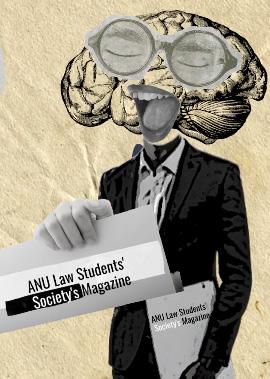 Art by Ankita Unnikrishnan: scene from Peppercorn Theme
Art by Ankita Unnikrishnan: scene from Peppercorn Theme
 ‘An Audacious Pair’ Art by Rose Dixon-Campbell
‘An Audacious Pair’ Art by Rose Dixon-Campbell
POLITICS AND OPINION


It’s Time, To Get It Right – An Open Letter to our Learned Political Hacks
I write this open letter following the Australian Labor Party (ALP) successfully taking government in New South Wales, now completing the collection of the infinity stones of all mainland states and Federal Governments and winning the Aston by-election for the first time in 30 years.
With these historic feats there are two thoughts that I feel the need to elaborate. The first being what must we do within the Party to uphold the trust placed in us by the people of Australia. The second being the hard facts that need to be accepted by our learned friends across the aisles of the political spectrum on both sides.

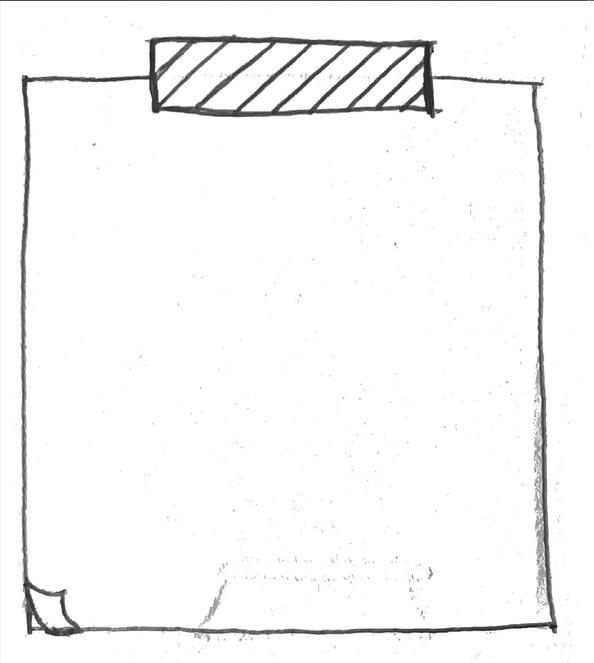
I, like the majority of our country, welcome this development. Having volunteered on many a campaign, it is a vindication of years of tears. Australia has chosen to trust the natural party of Government and to lead it into the next era of the 21st Century. But upon NSW Labor’s victory, I fear the mistakes of our past may come around to haunt us yet again. Historically, the NSW branch of the ALP has been the problem child of our grand old party. The branch mired in controversy, the branch favoured by pokies and developers, the branch that reloads the after-dark political commentators with ammunition.
We owe it to ourselves to get it right this time. The last time Labor was in government across the mainland was 2007. Within a few years that had crumbled. Western Australia was the first state to fall away from the ALP in
2008, followed by Victoria in 2010, NSW falling in 2011, Queensland falling in 2012, and concluding with South Australia’s fall in 2018. The Federal government went through the Rudd-Gillard leadership spills during this teardown, ultimately being losing control of the government in 2013.
This is an opportunity that we cannot afford to let go by the way. We are a party of Government, a party that leads Australia into the future, a party that progresses the country forward, and we have a lot to progress in this country. A conciliation with our national past and respect for our First Nations, climate issues, affordable and accessible housing, wages and superannuation among many others. These issues are front and centre of the national and state platforms of the party, and we cannot let these issues stray from focus. We need to continue building on the groundwork that has been laid down over the recent years. We need to keep focussing on issues that matter to Australia, rather than issues that only matter to us as hacks. We can vigorously discuss and debate issues within the party, but we cannot let any hack-tinted lenses blind us from the issues that matter to the broader community.
Our policy needs to continue to resonate and reflect the feelings, the issues, the opinions of the majority of the community. ‘Issues that matter, not controversy’ needs to be the primary guiding principle of our party. To quote Paul Keating, the “Labor Party is a party of conviction, the
Liberal Party is a party of convenience”. So let’s keep our convictions and stay true to the light on the hill.
I turn now to addressing my learned hacks of the diminishing ranks of the conservative persuasion and the ever-vocal zealots of the far left.
First, to those of the conservative persuasion. Labor campaigned on issues that stemmed from values such as integrity in democracy, respect for all Australians, and consensus not division. The National Anti-Corruption Commission and the Indigenous Voice to Parliament being two key examples of these values in legislative action. Australia is not a divided country, no matter how much you might try and import the false division of America. Our party brings people together, our country is about bringing people together. If your party is going to continue to divide people, to hide democracy, and to oppose the necessary progress that our country needs to continue being a modern country with modern values, modern economy, and modern living, then it is only upon your heads that you can blame for your fortunes. Democracy works when there is debate, and we welcome the debate. But should you not be willing to engage in democracy and rather oppose indiscriminately, then get out of the way of democracy and let the democratic will of Australia through. You are not the party of Government; you
are a dwindling minority of partisan fanatics. To our learned zealots and vocal idealogues on the fringe left. Compromise is not a terrible thing, compromiswe is democracy. What is often misunderstood or lost in the revolutionary communes – normally found not far from the city CBD – and book clubs is that ‘50% of something is always better than 100% of nothing’. The Labor Party governs, it does not shout from the sideline and complain that it could be better. Labor makes it better. The Labor Party is founded on the principle of producing a fairer, better Australia for all. In order to achieve that principle, a balance needs to be struck, a balance between all of Australia. That is what Government is: a balancing act. So, if those on the fringe want to deliver on their vocal promises, then we would direct them to do so, rather than claim credit for Labor’s deliveries when its positive and impede and complain about Labor’s policies when it fails to tick every box of the commune’s statement of demands.
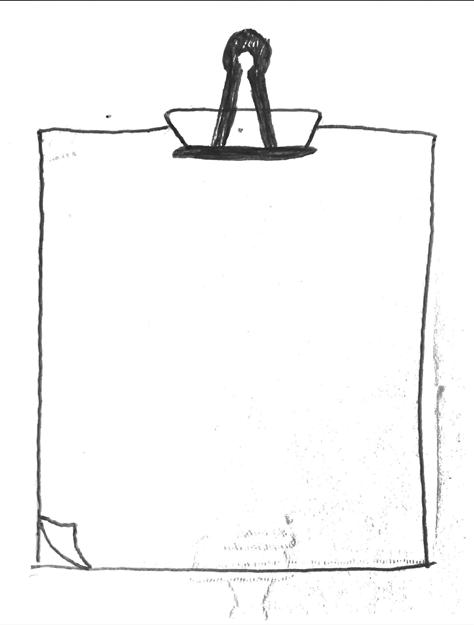
Labor has been elected by the majority of Australians in the majority of states. We would submit to all hacks to take that on notice and not impede the democratic will of Australia.

“compromise is not a terrible thing, compromise is democracy”
Ever since Al Gore’s release of ‘An Inconvenient Truth’ in 2006, the demand for environmental security in a legal and political paradigm has been clear. Gore stressed that greenhouse emissions from First World nations, in particular the United States of America, made up a proportion of global greenhouse emissions that was greater than ‘South America, Africa, the Middle East, Australia, Japan and Asia – all put together’. Although much of his work is now considered to be rhetoric rather than science, the global sentiment has shifted substantially since then in favour of action. However, the minimal change, the continued deterioration of the environment, and the lack of control regarding climate change provoke the questions: what are we doing, and are we doing enough?
This article argues for the further need for law reform, through analysing our compliance with current international and domestic regulations contemporary climate activism and protest movements, and insights and future recommendations. Despite the exponential growth in activism, minor institutional change has been implemented since ‘An Inconvenient Truth’. This inconvenience is ubiquitous. Even in 2023, there are concerns about family budgets and the bottom line, intangible climate ramifications on the lives of Third World individuals, and our ease of access of energy resources hazardous to the environmen t – inconvenience reigns. The call for rapid climate action balanced against the inadequacy of law reform leads me to wonder: is it time for us to address this inconvenient truth... again?






The current state of climate change activism is characterised by the continued growth of demand for tighter environmental regulation, aimed at addressing the damage caused by climate change. In 2021 the Intergovernmental Panel on Climate Change stipulated in its Working Group 1 Report, Climate Change 2021: the Physical Science Basis, that this growth continues to be ‘widespread, rapid and intensifying’. Further, this report states that, withou t greater action, the likelihood of global temperatures rising greater than current levels by 1.5°C is high, making prevention difficult and beyond reach. The seriousness of this data explains the changing values and actions of individuals in their fight for climate action, ultimately putting pressure on institutions to push for large-scale and rapid reduction of greenhouse gas emissions.
In the 21st century, climate protests are rampant. These protests demand tighter regulation of emissions and accountability in the political, legal and economic spheres. Greta Thunberg is a young environmental activist and global sensation, with her work and actions speaking to the current generation for substantive measures to address climate change. Thunberg catalysed a global resp onse in 2018, as she led protests such as ‘Fridays for Future’. This caused a global response, which was primarily youth-led and aimed at pressuring nations to comply with their moral obligations to tackle climate change and arguing for the introduction of mechanisms to minimis e greenhouse gas emissions. In Australia, the latest wave of climate change protests occurred in mid-to-late 2022, as the Blockade Australia activists began disruptions one Monday morning in response to Australia’s ecological destruction.
This was met with police in response to what was seen as violent behaviour, causing 10 arrests for the disturbance of public order. Despite all of this climate activism happening now, there are some mechanisms as well as institutional support for addressing climate change.
Emerging international law doctrines regarding climate change and the work of the United Nations are continually undermined by one particular principle: state sovereignty. Through the exercise of this principle, states do as they please. However, a landmark was reached through the Montreal Protocol on Substances that Deplete the Ozone Layer 1987, which was created out of growing fears of the hole in the Ozone Layer due to a heightened presence of ozone-depleting substances like chlorofluorocarbons (CFCs). This presence was due to human exploitation of hazardous chemicals. This Protocol was highly successful, as all United Nations member states were signatory to it, eventually reducing the presence of CFCs in the atmosphere. This is a profound example of the international community, despite the availability of state sovereignty as a means of avoiding action, acting unanimously to cultivate impetus and to stand side-by-side with fellow nation states to comply and act for intergenerational equity and the protection of our future.
To reduce global warming, the Paris Agreement was signed in 2016 with 195 signatories. The Paris Agreement aimed at keeping global warming to ‘well below’ 2°C from pre-industrial levels and to actively try to limit warming to 1.5°C. Further, there are mechanisms in place that allow for this global stocktake and transparency to keep nations accountable. Every 5 years there is a meeting to assess the collective progress on achieving targets under the Agreement and to inform other nations of means of enhancing the efficacy of their responses. The Paris Agreement was complemented by the Kyoto Protocol and the United Nations Framework Convention of Climate Change to structure global cooperation on climate change issues. Despite this strong position from signatories, are the measures actually working?
Australia has adopted these international obligations to a certain extent to assist with the creation of a sustainable future. However, there is a clear tension between intergenerational and intragenerational equality, and global and domestic demand for resources. Wildlife Preservation Society of Queensland Proserpine/ Whitsunday Branch v Minister for the Environment and Heritage and Ors (2006) 232 ALR 510 centred on the development of two Queensland coal mines. The result of this case was that the coal mines in question were built, despite calls for a proper evaluation of the environmental impacts of the mines. The Court found it was inconclusive as to whether the mines would cause serious irreversible damage to national heritage and biodiversity. So while international obligations are implemented in domestic legislation, including under the Environmental Protection and Biodiversity Conservation Act 1999 (Cth), t hese obligations are difficult to enforce by virtue of inherent uncertainties and ambiguities in their drafting, as well as conflicts of interest that arise between Governments arguing for action on climate change whilst reaping the economic benefits of increased demand for Australian resources.
Coal mining is an integral aspect of the Australian ethos that contributes significantly to the economy and continues to thrive, but it continues to have disastrous environmental ramifications that may never be properly addressed.
The Australian Government has recently introduced the Climate Change Act 2022 (Cth), which legislates our obligations under the Paris Agreement. This includes our obligations to reduce greenhouse emissions by 43% below 2005 levels by 2010, and a net zero target by 2050. Minister for Climate Change and Energy Chris Bowen said in a media release after the passing of this Act that, ‘current issues confronting Australian and global energy markets highlights why this long-term commitment is so important’ and hence this collaboration between different businesses, industries, unions and groups on a federal level are important. Community anger and sentiment directly arise from promises like this – these ambitious goals must align with positive action undertaken by the government, we cannot wait any longer.
Due to the unique biodiversity of Australia, it is essential that measures be implemented to counteract the hazardous effects of climate change on the health of our ecosystem. Although there continue to be conflicts of interest, the success of the Montreal Protocol 1985 speaks mountains of what the international community is capable of, with greater recognition that climate change is a force that should be addressed for intergenerational equity. Despite the development of strong international obligations, we must acknowledge the effects of climate change as having a disastrous impact on all of us. We must rapidly meet our obligations and work collectively towards achieving t hem as a nation. However, with the inaction, nothing has really changed. Climate change may forever remain an inconvenient truth in Australia...again.
 Art by Ella Mcgrath
Art by Ella Mcgrath
A Voice for the Voiceless –Review of ‘Broken: Children, Parents and Family Courts’
By Lara McKirdy

You might have missed it, but ‘Broken: Children, Parents and Family Courts’ by Catherine Lumby and Camilla Nelson has had a lasting relevance in commentary on the Australian family law system since 2021. Only a measly 250 pages long, this book is well worth a read if you want to stay up-to-date with the current issues plaguing Australia’s highly contentious family law system. Situated in its political context, family law legislation has undergone significant reform with each passing government since its inception in 1975. ‘Broken’ highlights the lasting issues and archaic culture plaguing this legal system.
Overview of contents
In three deeply impactful parts, this book begins by detailing the warped culture of the family court as influenced by passing conservative governments leaving their mark on an increasingly broken system. The book progresses in detailing the toxic litigation tactics employed by family barristers on either side to exhaust, financially drain, and traumatise the other party. The issue deepens in custody battles, with the weaponization of misogyny by lawyers and judges alike. Lastly, children experiencing sexual or violent abuse, and who are without a voice in court proceedings, have no defined methods of having such allegations taken seriously and are often accused of being subjected to parental manipulation, almost always by their mother. You will notice throughout this review that family court outcomes are disproportionately detrimental to women and their children.
Below I have outlined two very notable ideas from ‘Broken’, which I hope will motivate readers to get across these issues.
The Howard Government Reforms
Many lawyers agree that the current nature of the family law system is deeply set in its political context. The unravelling of the family law system today began with the nascent men’s rights movement in the 1980s, which saw the bombing of a family court and the death of a judge during the course of particularly grisly custody proceedings. Gareth Evans, former Vice-Chancellor of our university, set the stage for a long line of family law hijacking when, succeeding the court bombing, he offered an olive branch to the members of the men’s rights movement to take part in policymaking.
This olive branch led to a slew of inquiries that culminated in the Family Law Reform Act 1995 (Cth). The Act introduced dysfunctional provisions that stated that, unless it was contrary to their best interests, a child had the ‘right’ to be cared for by both of their parents. This reform was called the principle of ‘shared parental responsibility’, which set out that no matter how conflicted or acrimonious their relationship, parents must agree on everything related to the future needs of their children.
However, this reform failed to take into account the significant disputes over minor issues that spiteful or unhappy parents would engage. These disputes would not only make each other’s lives miserable, but also make their children’s lives a living hell. This reform was also insensitive toward mothers and children who had experienced domestic or sexual violence from their ex-partners who, for the sake of their own safety, would most benefit from having zero contact, rather than forced and mandated contact. This is a sample of the reforms imposed by the Howard government. The remnants of these reforms, including its fundamental legal principles and corresponding issues, are still rampant in the family law system today.
The Culture of the Court
Many family lawyers employ a plethora of nasty litigation tactics called ‘litigation abuse’ that any reasonable person would believe are completely unethical and out of line with professional practice standards. The longevity and seeming lack of concern for these tactics has ruined countless lives and traumatised countless victims of this vicious court.
Most family lawyers are intimately familiar with the ‘burning off’ legal strategy, whereby one party takes advantage of their larger bank balance to cause harm, distress, and financial loss to the other party through extended litigation. I am sure this is a tactic employed in various other courts of law, but considering such strategies are employed by one party against another where children are inextricably linked with the process is unconscionable, highly malicious, and unforgivably cruel. Cases featuring high levels of coercive and controlling abuse often run until the
family’s assets are exhausted, although the only cases that will be visible to judges are the ones that end up at trial. The saddest part concerning this legal strategy is how ubiquitous it is in family law, and how family lawyers are not held accountable for the ruin of not only their client’s lives but the lives of their client’s family members as well. Once again, this issue disproportionately affects women and children who are victims of domestic or sexual violence who, throughout the mediation or litigation process, are subject to their abuser having a tight grip on the family assets, refusing to disclose financial information, or even obfuscating financial matters. Litigation abuse is used as a means to destroy the other party emotionally and financially as a warped alternative to working toward a beneficial arrangement for both parties in a non-coercive course of litigation. The issue of ‘litigation abuse’ is only one part of the puzzle constituting the significant issues that define family court proceedings.
Summary
There is a silver lining to ‘Broken’. A number of reforms are provided to solve these complex problems, particularly around improving the voice of children in proceedings to support better outcomes for women and children who are subject to domestic or sexual violence. The book is a strong voice of hope that policymakers will see the damage done to the countless people that have been chewed up and spat out by the family law system as it currently stands. ‘Broken’ serves as a call to action for a government that has remained dormant on family law issues for over a year and to make a start toward repairing the issues of this legal system. ‘Broken’ also provides an important voice for the stories of the women and children you never hear about, but should.

Bishop & Schmidt by Balenciaga –Where Artificial Intelligence and Memes Meet
 By Callum Florance
By Callum Florance

Mark Twain once said: “explaining a meme is the quickest way to make it irrelevant”... and that was in like the 1800s or something. So why not do exactly that?
I released a meme through Peppercorn that added to the ‘[insert reference here] by Balenciaga’ lore, entitled Bishop & Schmidt by Balenciaga. I used Artificial Intelligence (AI) generators to make this happen, to bring ANU’s Chancellor Julie Bishop and Vice-Chancellor (soon-to-be retired) Brian Schmidt to life. Here’s my take on where AI and memes meet.
‘By Balenciaga’ meme
I’ll start up top by arguing that the ‘By Balenciaga’ meme is the first (almost) entirely AI-generated meme. Jokes are great when they’re unexpected and reference something you know. So when you have an AI text generator come up with prompts, an AI image generator come up with close visual approximations of those prompts, an AI speech generator create a familiar voice that can say anything, and an AI animation generator that can make images come to life, the process itself produces so much variability that this something you know can quickly transform into something odd and adjacent to its original self – that’s what makes it hilarious.
The original and second Harry Potter ‘By Balenciaga’ memes by demonflyingfox posted to YouTube five days ago are a testament to this thesis, slight references to the original characters with hilariously randomised changes. I hope that more AI-savvy users get on board and mess around with the process, as I’m sure there are many other well-developed, miscellaneous AI generators that could randomise things even further and produce even more shocking results.
AI as the ultimate, multi-talented assistant
I set out to create Bishop & Schmidt by Balenciaga before the meme became too weathered, before some other (almost) entirely AI-generated meme takes its place. I had heard the same argument over and over again: “AI will replace most unskilled jobs and some low-level skilled jobs”. After my experience journeying through the AI generators that are available now, I agree.
For example, contract reviews for clients are undertaken in commercial and corporate law firms and are typically done by associates, paralegals, or clerks. This involves manually trawling through, and analysing, a contract for any number of reasons. A pretty low-level skilled job, right? Well, KIRA Systems exists and can basically do that for you, provided that you engage with it correctly. Although KIRA Systems heralds itself as machine learning technology rather than AI, some argue that machine learning is a subset of AI and is the backbone of AI’s goal of replicating human consciousness through learning and mimicking. KIRA Systems will only develop and grow as lawyers become more AI-savvy and willing to engage with AI and/ or machine learning technology correctly. This might take a hit for our billable hours, but it’ll make labour-intensive tasks like contract reviews more efficient for clients.
KIRA Systems is to contract review, as AI generators
used in the By Balenciaga process are to the creative process. This will probably make it harder for unpaid internship-seeking creatives to enter the media and entertainment space (some of these AI generators cost less than $100 per year to do the same work more efficiently), but will hopefully open up more substantive opportunities for these masochists if they know how to use AI.


Conclusion – How to approach AI now There’s a familiar story about typists. In the 1970s (and prior), no one needed to learn how to type unless their job was literally a ‘typist’. Someone decided to take a typing class despite not being a typist, which led to confusion from friends and family on what the point of that class was given that typing was so niche and irrelevant unless you were actually a typist. Now, typing is pretty much a given for every workplace after the information revolution post-1980s.
A few years ago they said the same for coding, that it’d be a pre-requisite for future jobs. However, the analogy to the typing revolution aligns more closely with AI because coding is language-dependent and highly technical, whilst AI software and generators rely on positive user experience being integrated into their development. AI generators might even take over the job of coding... I mean, half of the job is finding solutions on Google and GitHub, isn’t it? Why waste a qualified engineer’s time on manually typing up 10,000 lines of code when an AI text generator can search for an answer and make corrections?
If you want to have a go at learning about AI, just do a bit of research and sign-up for an AI software that aligns with one of your hobbies. It won’t do everything for you, but it’ll teach you something about delegation in the same way that you might delegate tasks to people in the workplace. You’ll still need to delineate the scope properly, you’ll still need to clarify where there’s any confusion, but managing that automated process will take a lot less effort than manually undertaking the same task yourself. This isn’t just fun, it’s also probably going to be important for the world post-university.
Good luck with your AI adventures, it was fun for me and I’m sure you will learn as much as I did!
ACADEMIC

Art by Ella Mcgrath

Social Justice Essay Writing Competition 2023 -
First-Place Winner
The Social Justice Essay Writing Competition 2023 was led by the ANU LSS and sponsored by Clayton Utz. In 2023, students were asked to submit an essay of no more than 2500 words identifying a social justice issue in the law and suggesting reform. The first-place winner of the competition received $700 and is being featured in the first edition of Peppercorn for 2023. Second place received $300.
Incoherence and Indeterminacy
The Impact of Family Violence in Property Disputes
By Phoebe Tulk.

INTRODUCTION
It is well-established that the provisions of the Family Law Act 1975 (Cth) (‘Act’) regulating the alteration of property confer on the Courts a wide measure of discretion1 . The complexity of such provisions, for both matrimonial2 and separating de facto relationships3 , provide no preferential structure nor assistance in explaining how the Courts are to achieve a just and equitable outcome4 . Notably, inconsistent interpretation of the role of family violence in the application of property provisions under Part VIII and Part VIIIAB of the Act renders parties uncertain as to their rights and entitlements5 . With the recent release of the draft Family Law Amendment Bill 2023 (Cth) (‘Amendment Bill’), it is relevant to reflect on the impact of judicial indeterminacy on the pursuit of justice for victims of family violence.
2. BACKGROUND
Sheehan and Smyth identify that women who have experienced severe domestic abuse are three times more likely than women who have not reported family violence to receive less than a 40% portion of the asset pool upon settlement, both in a court determination and private settlement6 . As such, victims are often forced to stay in a violent relationship or leave and subsist in poverty7 . Around 15% of women who experience family violence temporarily leave the home but ultimately return due to a lack of money and the threat of homelessness8 . In the circumstances that a relationship breaks down and parties commence court-determined property reallocation, around 68.4% of such cases involve family violence9 .
3. THE AMENDMENT BILLL
The Amendment Bill follows the Australian Law Reform Commission’s (‘ALRC’s’) report on the family law system (‘ALRC Report’)10 . The ALRC Report recommended a wide range of reforms, the most relevant being the recognition of the significance of family violence to the economic circumstances of victims11 .
1.
In recognition of the barriers posed by incoherent decision-making to the achievement of justice12 , the ALRC Report considers it vital that a tort of family violence and related compensatory provisions be included in the Act13 .

Despite the ALRC Report petitioning for a clear and easily understood framework to achieve justice, the Amendment Bill is absent any reference to the intersection between family violence and property adjustment under section 79(4)14 and section 90SM(4)15 , relating to married and separating de facto couples respectively. In the interest of justice, it is important to evaluate the potential pathways for reform that the Amendment Bill fails to adopt.
4. LEGITIMATE GUIDELINES?
Authoritative precedent in the arena of property alteration is lacking. Young and Goodie contend that family property law has evolved into a jurisdiction overly characterised by discretionary decision-making16 . In Norbis v Norbis17 , Mason and Dean JJ discussed the nature of judicial discretion regarding assessing factors to achieve a just and equitable property order18 . As the assessment demands a value judgement, their Honours held that ‘no particular opinion [is] uniquely right’,19 corroborating reasonable differences in answer.20
However, their Honours also suggested that Parliament intended for appellate courts to develop rules that affect the exercise of discretion and diminish arbitrary adjudication21 . The Full Court of the Family Court is justified in forming ‘legitimate guidelines’ which do not carry the full force of binding legal rules, but should generally be followed unless it is expedient to not do so22 . Whilst not constituting a fixed code23 , the failure to apply a legitimate guideline may constitute a miscarriage of discretion24 . The power of the Full Court to establish legitimate guidelines was reaffirmed.
in In the Matter of McLay,25 in which it was recognised that the formation of principles avoids a ‘wilderness of single instances’ so property assessment is seen to be a disciplined exercise.26
The Full Court revisited the extent to which this formulation of legitimate guidelines can fetter the exercise of judicial discretion in Hoffman v Hoffman (‘Hoffman’)27 . Legitimate guidelines may be expressed as a principle with clear indicia as to a ‘category of case’ which it is to apply.28
Yet, Young and Goodie argue that the Full Court does not tend to explicitly identify when statements are considered ‘legitimate guidelines’ or merely indicative of the way discretion is usually exercised29 . As acknowledged by the Full Court in Hoffman, some statements within identifiable cases may be described as legitimate guidelines, while others may not30 . Such vagueness reflects the prevalence of inconsistent outcomes when considering family violence in property alteration.
5. AREAS FOR REFORM
Various studies have documented the detrimental impact of domestic violence on a partner’s attempts to meaningfully contribute to family life, both as a child-carer or homemaker.31 Domestic violence similarly negatively influences victims efforts to maintain or gain employment, including through indirect barriers created by related physical and psychological health issues32 . Nonetheless, a definitive approach to violence in property adjustment is absent in the Act and the Amendment Act.
The Full Court first recognised domestic violence as a factor deserving consideration in property assessments in In the Marriage of Doherty.33 In that case, the Full Court held that but for the domestic violence exhibited by the husband, the wife’s contributions as a homemaker and parent
may have increased34 . Although the violence related to a relatively short period of time, Baker J validated an adjustment of the assessment of contributions considering the husband’s conduct.35
Soon after, in the seminal case of In the Marriage of Kennon (‘Kennon’)36 , Fogarty and Lindenmayer JJ, in obiter dicta, discussed the ‘pervasiveness and destructiveness of domestic violence’ and the extent to which it is within the scope of section 79.37 The Kennon doctrine established that a judge is permitted to consider, in relation to respective contributions, a course of violent conduct by one party towards the other during the relationship, to the extent that it is demonstrated the violence had a significant adverse impact upon that party’s contributions or made their contributions significantly more arduous than they ought to have been. 38 However, their Honours noted that the factor should only apply to a ‘narrow band’ of ‘exceptional cases’ so as not to open the ‘floodgates’ to inappropriate claims.39 Further, the absence of a principle of quantification and vagueness in phrasing led to confusion, diverse interpretation, and underutilisation. 40
Young and Goodie assert that adjustments in respect of the Kennon doctrine are only recognised in exceedingly limited situations41 . For example, Brewster FM rejected the Kennon doctrine in Palmer v Palmer.42 His Honour contended he was not bound to apply the principle as the Full Court’s analysis was not ratio decidendi43 and the Act does not indicate that contributions are to be weighted in a way that factors domestic violence.44 Instead, his Honour determined that the parties contributions were not altered by considerations of arduousness, including physical and verbal violence.45
Over time, key elements have been extracted from the Kennon doctrine which have established a threshold the victim must surpass for an adjustment to be considered.46
Upon application, the doctrine limits the relevance of violence to the assessment of contributions; when the abuse fails to satisfy the minimum impact, it is treated by the decision-maker as irrelevant.47
5.1
Violent course of conduct
In Stevens v Stevens48 , the Full Court considered that the phrase ‘course of conduct’ does not necessitate frequency but does require a degree of repetition in violent behaviour.49 In Kucera v Kucera50 , Altobelli FM granted a 15% Kennon adjustment in the wife’s favour.51 Referring to his assessment as ‘subjective and discretionary’, his Honour took into account both the length of the period of violence and its frequency and nature52 . The Full Court contemplated the bounds of the Kennon principle in Baranski v Baranski53 and found ‘nothing in the provisions of s 79’ to suggest that a course of violent conduct that occurred post-separation was excluded from consideration. 54
5.2 Demonstrated significant adverse impact / made contributions significantly more arduous

Evidentiary issue arises in relation to demonstrating that violence experienced by a spouse had a significant adverse impact upon their ability to contribute to the family or made their contributions significantly more arduous than they ought to have been.55 For example, if the victim does not seek medical help or document the abuse, there is minimal evidence to substantiate the claim. 56 In particular, less than half of domestic abuse victims report the violence to the police57 or seek medical treatment for any injuries sustained.58
However, the Full Court in Spagnardi v Spagnardi (‘Spagnardi’)59 acknowledged that a lack of evidence of the bearing of experiencing family violence on a victim’s contributions is not automatically fatal to an application.60 The Full Court followed this approach in Benson v Drury,61 holding that the necessary nexus between
demonstrated violence and the adverse impact upon the victim’s contributions can be inferred from the party’s lay evidence.62
5.3 Narrow band of cases
Inconsistency arises pertaining to what is considered as ‘exceptional’ and whether it is measured in terms of severity or duration.63
In Stellard v Dresden Stellard64 , O’Reilly J divided the property 15% in the wife’s favour, deeming the matter capable of coming within the ‘narrow band’ of matters substantiating an adjustment. 65 His Honour suggested the existence of a yardstick to be passed before an adjustment would be contemplated, turning on an assessment of the nature of the violence.66 McClelland DCJ mirrored this approach in Giunta v Giunta67 , noting that a victim is required to establish that their circumstances ‘give rise to an exceptional case’.68
In a different vein, Moore J suggested in Laguna v Laguna67 that the persistence of violence over many years constitutes an ‘exceptional’ case70 . Conversely, in Dodge v Meldrum,71 Brown FM accepted that the husband was ‘frequently and seriously violent’ towards the wife for the duration of their marriage72 , yet decided not to make a Kennon adjustment, as the circumstances were not ‘exceptional in the terms referred to by the Full Court’.73 On the other hand, the Full Court in Spagnardi74 indicated the phrase ‘exceptional’ is not to be equated with ‘rare’.75
Notably, in Meiloakitau & Taumoepeau76 , Loughnan JR recorded that the violence perpetrated by the husband was unacceptable yet simultaneously considered it was inherently unfair for the wife to raise it many years after the event as ‘recollections fade, witnesses... become unavailable and records are lost’.77 His Honour mirrored this sentiment in Cornwell v Cornwell78 , maintaining that the husband’s long-term violent conduct over a marriage of nearly 20 years detracted from the wife’s capacity to substantiate a Kennon claim as she should have ‘addressed [the abuse] at the time’.79
As identified by Robb J in Norris (a pseudonym) v Brooks (a pseudonym)80 , the Court does not tend to articulate how a particular percentage adjustment is selected, preferring to conduct an ‘intuitive assessment’ and avoid ‘complex explanation’.81
As such, no correlation between the length of the course of violence, when and how the violence occurred, and the probability of a successful Kennon adjustment, is evidenced.82 Despite the Full Court acknowledging the import of legitimate guidelines in Hoffman,83 no judicial officer has discussed whether the Kennon principle is regarded as a legitimate guideline.84
6. OPTIONS FOR REFORM
Knowledge is key to ensuring legal practitioners are able to assist clients and ensure realistic expectations are developed as to the likely outcome of litigation.85 However, a lack of jurisprudential clarity and legitimate guidelines derails capacity to reconcile the reasoning of a trial judge with that of the Full Court86 , adversely impacting justice.
6.1 Legislative recognition
As noted in the ALRC Report87 and contended by Parkinson88 , a more prescriptive and formulaic approach to family property alteration holds potential to restore consistency in decision-making and positively impact justice for families and victims of family violence Cox SC similarly contends that judicial attitudes to property adjustments for family violence lack uniformity, with the wide variety of approaches leading to a wide variety of outcomes89 . It is axiomatic that targeted legislative intervention90 is essential to restrict the current unfettered discretion91 as to whether violence is considered in the allocation of property interests. Specifically, Warden and Young consider that the complex combination of vague phrases espoused by the Full Court in Kennon ought to be clarified in the Act.92 The ALRC similarly contends that legislative recognition of the Kennon precedent would provide greater certainty for victims and their legal representatives seeking to seek a family violence adjustment in property disputes93 . Mushin AM, former Justice of the Family Court, emphasises that the law has not kept pace with the developments in societal understanding of family violence and the significance of the impact on victims.94
Further, rendering the relevance of family violence explicit in the Act signals an increase in victim’s bargaining power and acts to counter the power imbalances between a victim and ex-partner. 95

6.2 Family violence tort
In Kennon, Baker J acknowledged that a claim in tort for battery and assault is not intended to effectively encompass the dynamic of a relationship of long-term family violence.96 Further, Cox SC, former judge of the NSW District Court, stresses that the adjustments made in favour of victims in property division cases fall significantly behind awards made in factually comparable matters in other jurisdictions. 97
In an endeavour to bridge this gap, the ALRC Report recommends the creation of a tort of family violence allowing victims to claim compensation for both physical and psychological injuries and any related economic loss.98 The addition of such a provision remedies concerns raised that the modest value of Kennon adjustments would not be ameliorated by ratifying the doctrine.99 A compensatory framework addresses the economic disadvantage generated by the relationship. 100 Inclusion within Part VIII and Part VIIIAB of the Act bestows clear jurisdiction on the family courts to hear claims in conjunction with property division cases, allowing victims to avoid recounting their abuse in two separate proceedings.101 Parkinson supports empowering the family courts to grant compensation for pain. and suffering and economic loss resulting from a history of family violence during a relationship. 102
7. CONCLUSION
Broadly, Australian jurisprudence on property alteration demonstrates a lack of legitimate principles and an absence of consistent decision-making.103 A coherent body of law on the impact of family violence in property disputes is essential to achieving justice for parties during a relationship breakdown. The lack of comprehensive amendment to Part VIII and Part VIIIAB of the Act in the Amendment Bill deems is unacceptable. More prescriptive legislation relating to family violence is necessary to recognise the overarching aim of property settlement – reaching a just and equitable outcome. 104
References:
1. Paul Brereton, ‘Breaking Precedent: The Relevance of Previously Decided Cases in Determining the Entitlements of Parties in Property Proceedings’ (Conference Paper, Family Law Practitioners Association of Queensland, 18 July 2015).
2. Family Law Act 1975 (Cth) s 79 (‘Family Law Act’).
3.Ibid s 90SM.
4. Australian Law Reform Commission, Family Law for the Future – An Inquiry into the Family Law System (Report No 135, March 2019) 199.
5. Ibid 203.
6. Grania Sheehan and Bruce Smyth, ‘Spousal Violence and Post-Separation Financial Outcomes’ (2000) 14 Australian Journal of Family Law 102, 111.
7. Anne Summers, ‘The Choice: Violence or Poverty’ (Research Paper, University of Technology Sydney, July 2022) 8-9.
8. Ibid 8.
9. Deputy Chief Justice Robert McClelland, ‘Update from the Federal Circuit and Family Court of Australia’ (Conference Paper, The Law Society of NSW Specialist Accreditation Conference, 4 August 2022).
10. Australian Law Reform Commission, Family Law for the Future – An Inquiry into the Family Law System (Report No 135, March 2019).

11. Ibid 240.
12. Australian Law Reform Commission, Family Law for the Future – An Inquiry into the Family Law System (Report No 135, March 2019) 199.
13. Ibid 240.
14. Family Law Act (n 2) s 79(4).
15. Ibid s 90SM(4).
16. Lisa Young and Jo Goodie, ‘Is there a need for more certainty in discretionary decision-making in Australian family property law?’ (2018) 32(1) Australian Journal of Family Law 162, 162.
17. (1986) 10 Fam LR 819.
18. Norbis v Norbis (1986) 10 Fam LR 819, 821.
19. Ibid.
20. Norbis v Norbis (1986) 10 Fam LR 819, 821.
21. Ibid 822.
22. Norbis v Norbis (1986) 10 Fam LR 819, 822.
23. In the Marriage of Browne and Green (1999) 25 Fam LR 482, 496.
24. Norbis v Norbis (1986) 10 Fam LR 819, 822.
25. (1996) 20 Fam LR 239.
26. In the Matter of McLay (1996) 20 Fam LR 239, 249.
27. (2014) 51 Fam LR 568, 575.
28. Hoffman v Hoffman (2014) 51 Fam LR 568, 577.
29. Lisa Young and Jo Goodie, ‘Is there a need for more certainty in discretionary decision-making in Australian family property law?’ (2018) 32(1) Australian Journal of Family Law 162, 175.
30. Hoffman v Hoffman (2014) 51 Fam LR 568, 577.
31. New South Wales Law Commission, Relationships (Report No 113, June 2006) 221.
32. Ilsa Evans, ‘Battle-scars: long term effects of prior domestic violence’ (Research Paper, Centre for Women’s Studies and Gender Research, Monash University, February 2007) 25.
33. (1995) 20 Fam LR 137.
34. In the Marriage of Doherty (1995) 20 Fam LR 137, 141.
35. ibid
36. (1997) 22 Fam LR 1.
37. In the Marriage of Kennon (1997) 22 Fam LR 1, 19.
38. Ibid 24.
39. In the Marriage of Kennon (1997) 22 Fam LR 1, 24.
40. Patricia Easteal, Catherine Warden, and Lisa Young, ‘The Kennon ‘factor’: Issues of indeterminacy and floodgates’ (2014) 28(1) Australian Journal of Family Law 1, 24.
41. Lisa Young and Jo Goodie, ‘Is there a need for more certainty in discretionary decision-making in Australian family property law?’ (2018) 32(1) Australian Journal of Family Law 162, 182.
42. [2010] FMCAfam 999.
43. Palmer v Palmer [2010] FMCAfam 999, 74.
44. Ibid 81.
45. Palmer v Palmer [2010] FMCAfam 999, 95.
46. Patricia Easteal, Catherine Warden, and Lisa Young, ‘The Kennon ‘factor’: Issues of indeterminacy and floodgates’ (2014) 28(1) Australian Journal of Family Law 1, 6.
47. Ibid.
48. [2005] FamCA 1304.
49. Steve v Stevens [2005] FamCA 1304, [65].
50. [2009] FMCAfam 1032.
51. Kucera v Kucera [2009] FMCAfam 1032, 110.
52. ibid.
53. [2012] FamCAFC 18.
54. Baranski v Baranski [2012] FamCAFC 18, 257.
55. Kennon v Kennon (1997) 22 Fam LR 1, [24].
56. Patricia Easteal, Catherine Warden, and Lisa Young, ‘The Kennon ‘factor’: Issues of indeterminacy and floodgates’ (2014) 28(1) Australian Journal of Family Law 1, 20.
57. Katrina Grech and Melissa Burgess, Trends and patterns in domestic violence assaults: 2001 to 2010 (Issue Paper No. 61, May 2011) 10.
58. Emma Birdsey and Lucy Snowball, Reporting Violence to Police: A survey of victims attending domestic violence services (Issue Paper No. 91, October 2013) 3
59. (2003) FamCA 905.
60. Spagnardi v Spagnardi (2003) FamCA 905, [46].
61. (2020) 62 Fam LR 1.
62. Benson v Drury (2020) 62 Fam LR 1, [49].
63. Patricia Easteal, Catherine Warden, and Lisa Young, ‘The Kennon ‘factor’: Issues of indeterminacy and floodgates’ (2014) 28(1) Australian Journal of Family Law 1, 13.
64. Stellard v Dresden Stellard [2011] FamCA 718, [286].
65. Ibid [339].

66. [2011] FamCA 718.
67. (No 3) [2021] FamCA 272
68. Giunta v Giunta (No 3) [2021] FamCA 272, 511
69. [2007] FamCA 320.
70. Laguna v Laguna [2007] FamCA 320, 77.
71. [2010] FMCAfam 119.
72. Dodge v Meldrum [2010] FMCAfam 119, 131.
73. Ibid 138.
74. (2003) FamCA 905.
75. Spagnardi v Spagnardi (2003) FamCA 905, [46].
76. [2008] FamCA 476.
77. Meiloakitau & Taumoepeau [2008] FamCA 476, [149].
78. [2009] FamCA 1072.
79. Cornwell v Cornwell [2009] FamCA 1072, [131].
80. [2022] NSWSC 80.
81. [2022] NSWSC 80, [478].
82. Patricia Easteal, Catherine Warden, and Lisa Young, ‘The Kennon ‘factor’: Issues of indeterminacy and floodgates’ (2014) 28(1) Australian Journal of Family Law 1, 15.
83. Hoffman v Hoffman (2014) 51 Fam LR 568, 575.
84. Lisa Young and Jo Goodie, ‘Is there a need for more certainty in discretionary decision-making in Australian family property law?’ (2018) 32(1) Australian Journal of Family Law 162, 182.

85. Patrick Parkinson, ‘Why are Decisions on Family Property so Inconsistent?’ (2016) 90(7) Australian Law Journal 498, 499.
86. Patrick Parkinson, ‘Why are Decisions on Family Property so Inconsistent?’ (2016) 90(7) Australian Law Journal 498.
87. Australian Law Reform Commission, Family Law for the Future – An Inquiry into the Family Law System (Report No 135, March 2019) 202.
88. Patrick Parkinson, ‘Why are Decisions on Family Property so Inconsistent?’ (2016) 90(7) Australian Law Journal 498, 498.
89. Brian Knox, ‘Recovery of Damages for Family and Domestic Violence Different context: Different approaches’ (Conference Paper, National Family Law Conference Melbourne, October 2016) 8.
90. Lisa Young and Jo Goodie, ‘Is there a need for more certainty in discretionary decision-making in Australian family property law?’ (2018) 32(1) Australian Journal of Family Law 162, 187.
91. Wallis v Manning [2017] FamCAFC 14, 57.
92. Patricia Easteal, Catherine Warden, and Lisa Young, ‘The Kennon ‘factor’: Issues of indeterminacy and floodgates’ (2014) 28(1) Australian Journal of Family Law 1, 24.
93. Australian Law Reform Commission, Family Violence: Improving Legal Frameworks (Consultation Paper, 2010) 426–8.
94. Nahum Mushin AM, Submission No 123 to Social Policy and Legal Affairs committee, Inquiry into a Better Family Law System (4 September 2017) 2.
95. Juliet Behrens, ‘Domestic violence and property adjustment: A critique of “no fault” discourse’ (1993) 7(9) Australian Journal of Family Law 9, 22.
96. n the Marriage of Kennon (1997) 22 Fam LR 1, 60.
97. Brian Knox, ‘Recovery of Damages for Family and Domestic Violence Different context: Different approaches’ (Conference Paper, National Family Law Conference Melbourne, October 2016) 1.
98. Australian Law Reform Commission, Family Law for the Future – An Inquiry into the Family Law System (Report No 135, March 2019) 240.
99. Rape & Domestic Violence Services Australia, Submission No 287 to the Australian Law Reform Commission, Inquiry into the Family Law System (14 May 2018).
100. Patricia Easteal and Lisa Young, Submission No 394 to the Australian Law Reform Commission, Inquiry into the Family Law System.
101. Australian Law Reform Commission, Family Law for the Future – An Inquiry into the Family Law System (Report No 135, March 2019) 242.
102. Patrick Parkinson, ‘Unfinished business: Reforming the law of property division’ (2000) 14(4) Australian Family Lawyer 1, 4-5.
103. Patrick Parkinson, ‘Why are Decisions on Family Property so Inconsistent?’ (2016) 90(7) Australian Law
Reference s[ continued]:

 Art by Ankita Unnikrishnan: scene from Peppercorn Theme
Art by Ankita Unnikrishnan: scene from Peppercorn Theme
Deifying the Dirtbag:
Why We Love to Watch Terrible Lawyers
By Liam Sandison

It’s fair to say that there are more than a few legal dramas in today’s film and television industries. People are constantly tuning in to see expensive suits, important meetings and drama-filled courtroom clashes. But they’re also tuning in for the underhanded dealings, ethical dilemmas and shady solicitors portrayed in these shows.
Why are we so culturally drawn to the so-called ‘dirtbag’ – unethical and unprofessional – lawyer? What is it about these depictions of abhorrent behaviour in the legal industry that so grips the cultural psyche? I argue that we find ourselves fixated on dirtbag lawyers because we want to watch them push the boundaries, upset the status quo and test the industry for its merits and flaws. To explain, I’ll refer to two notable fictional lawyers: Cleaver Greene from the ABC series Rake 1 , and Jimmy McGill (Saul Goodman) from the AMC series Better Call Saul 2 . I’ll be analysing these two characters from three different perspectives: their posturing as an ‘antihero’, the use of their characters as a muddy reflection of the legal industry and their unique alienation from the profession.
The Antihero Theory:
The last 25 years of television has seen the acceptance of a new type of protagonist: the ‘antihero’. Antiheroes are characters around which a film or television show revolve, but who fail to display typical ‘heroic’ traits –in many cases they are antithetical to them3 . What is most interesting for our purposes here is just how well-suited a dirtbag lawyer is to being an antihero. Both our case studies, Cleaver Greene and Jimmy McGill, act with blatant disregard for the rules and often find themselves at odds with the industry they work in. Indeed, the adversarial nature of our Common Law system can be a fantastic environment for lawyers who act out of self-interest and a lack of moral grounding4 . But perhaps we should question this notion of ‘unethical’ – after all, Cleaver Greene and Jimmy McGill are not villains. It would be rather bizarre for audiences to root for them on mass if they possessed no moral character. So what are their ‘antihero ethics’ and what’s the point of giving them any weight?
A large point of differentiation between our dirtbag lawyer case studies and ‘good’ lawyers is the approach to ethical decision-making. Whereas much of the legal industry’s ethics are centred around a deontological or rules-based approach5 , Cleaver and Jimmy have a consequentialist approach. That is, they are concerned with the consequences of their actions6 . This isn’t to say that they view all their actions as ethical because they lead to good
results, but rather that the actions can be retrospectively justified contingent on the outcome. Jimmy exemplifies this perfectly in the Season 2 episode, ‘Gloves Off’7 . There, Jimmy is almost fired after the partners of law firm Davis & Main discover that he aired a commercial without their consent, despite the fact that the ad caused a huge turnaround in client outreach. The partners find the ad unprofessional and distasteful, but Jimmy struggles to understand how his actions have caused any damage. To him, the ends have justified the means. The audience would also be forgiven for empathising with him here. Jimmy may have acted out of turn, but it is clear to him that his actions have caused a net benefit for the firm.
The antihero archetype is in part characterised by an inherent tragedy – the characters will be undone by their inability to change for the better8 . Indeed, both Cleaver and Jimmy are undone by their inability to temper their self-destructive sides. Cleaver continues to cause mayhem in the courtroom, out in public and even during a stint in Parliament. He doesn’t reduce his consumption of drugs and alcohol in any significant way, he continues to involve himself in various criminal or unethical enterprises, and he proves to be a disruptive presence for those closest to him. Jimmy is perhaps a greater example of this, primarily because Better Call Saul chronicles his metamorphosis from Slippin’ Jimmy McGill into the infamous Saul Goodman. Mike Ehrmantraut, Jimmy’s associate, wonderfully summarises the antihero’s tragedy, musing:
We all make our choices. And those choices, they put us on a road. Sometimes, those choices seem small, but they put you on the road. You think about getting off, but eventually you’re back on it. And the road we’re on led us out to the desert and everything that happened there and straight back to where we are right now. And nothing, nothing can be done about that.9
The paths of dirtbag lawyers like Jimmy and Cleaver are inherently tragic. The audience sees the redeeming qualities within them – they might even see them as good people at some stage – but can only watch as the inner turmoil for these characters continues to grow.
The Dirty Mirror Theory:
It can be difficult to self-reflect on our own flaws. Sometimes we need to look in the mirror before we can think about constructive change, and sometimes that mirror needs to be dirty for us to really take notice. As antiheroes, dirtbag lawyers prove to be insightful reflections. When the status quo is all-encompassing, a provocateur is needed to throw a spanner in the works. Characters like Cleaver or Jimmy do just that. Clearly the legal industry (both fictional and real) condemns the actions of these dirtbag lawyers, but is condemnation enough? These characters aren’t anomalies; examples of malpractice and unprofessional conduct occur across the industry10 . Hell, Cleaver Greene is even based on a real lawyer11 . If anything, the frequency with which unethical lawyers like as Jimmy and Cleaver appear in popular culture should tell us something about public perception. It isn’t that the public views all lawyers as corrupt, greedy and misguided. Rather, there is a perception of the industry as an enabler – dirtbag lawyers like Cleaver Greene and Jimmy McGill can get away with misbehaviour because the system enables them to do so.
The system does not just enable dirtbag lawyers to practice and flourish. At times, these lawyers are ironically better than the system. Rake points this out to great comedic effect with the plethora of clients that Cleaver defends. Always the contrarian, Cleaver relishes the ‘unwinnable cases’, defending a cannibal, a terrorist, and a person who committed bestiality, amongst others. But he doesn’t just defend them in a passable manner; he manages to successfully clear many of their charges, calling into question the ability of law enforcement to enact justice. Season 2 of Rake pits Cleaver against corrupt, power-drunk politician Cal Macgregor and, in so doing, highlights the flaws with the political system. The fact that Cal can enact such sweeping antiterrorism laws in order to punish specific targets with
It’s perhaps worth highlighting that these characters do not just give us a startling reflection of the legal industry. They provide an insight into the public perception of lawyers. It’s no coincidence that Jimmy slowly morphs into the slimy, underhanded and selfish Saul Goodman; or that Cleaver is a drug-abusing, know-it-all barrister constantly in strife. They may be caricatures, but stereotypes rarely stem from complete fiction. The legal industry is notorious for drug abuse12 , and the legal system is constantly accused of being self-serving or impervious to the desires of its subjects13 . Even the ads Jimmy (as Saul Goodman) creates are direct satirisations of legal advertising in America14 . These shows intend to make the audience feel uncomfortable about the conduct of lawyers generally – not just dirtbag lawyers. When that uncomfortability arises, we should take note. We may just be uncomfortable with our own reflections.
The Outsider Connection:
So far, we’ve considered the attraction or intrigue of the unethical lawyer from the relatively confined perspective of those who have either a stake in, or knowledge and experience of, the legal industry. But it’s also worth observing this from a broader, non-legal perspective. From such a vantage point, the reasons for our general fascination with dirtbag lawyers like Jimmy or Cleaver seem far more apparent. Put simply, these characters are outsiders. Their unethical behaviour and rampart disregard for professional convention and rules exclude them from the rest of the industry. In some sense, this is just smart writing; a character who is different is much more likely to stand out and elicit audience sympathy than an unremarkable character who conducts themselves ethically. But this is not the full picture. The allure of these characters stems in part from their status as underdogs.
Cleaver and Jimmy are extrinsic to the legal community. They practice law but aren’t part of a firm. They rally against the idea of being told to work or act in a certain way. They are non-conformist and individualistic to the point of fault. This makes them the perfect vantage point for an audience who is unaware of, or baffled by, the complexities of the legal system. It isn’t the jargon-spewing, multimillionaire lawyer that the audience will gravitate towards, but rather the down-on-his-luck underdog who continues to work despite rejection by his peers.
This is precisely the case in Better Call Saul. In the Season 1 episode ‘Pimento’15 , Jimmy learns that it was his own brother, Chuck, who had been preventing him from joining the firm (of which Chuck was a founding partner).
Art by Callum Florance
When pressed for reasons, Chuck declares that “people don’t change. You’re Slippin’ Jimmy. And Slippin’ Jimmy, I can handle just fine. But Slippin’ Jimmy with a law degree is like a chimp with a machine gun. The law is sacred! If you abuse that power, people get hurt.”16 Ironically, it’s this very accusation that drives Jimmy to further misbehaviour. Rather than recognising the enormous effort Jimmy has gone through to get a law degree and straighten out, Chuck is intent on belittling his achievements and gate-keeping the legal profession. This attitude is damaging to an industry that is already viewed by some as elitist and out-of-touch17 . It’s also rather hypocritical given that, in theory, the criminal law and its various institutions would want to see a reformed criminal, especially one who has become impassioned with the very law that punished him.
Conclusion:
Jimmy McGill and Cleaver Greene are not good people. They’re dirtbag lawyers. They lie, steal, cheat and abuse the system that they’re supposed to uphold. But they’re not without redeeming qualities. Their conflicting moral stances and inherently tragic characterisation provides for fantastic storytelling. Their stark portrayal and reflection of the industry and its members is confronting. Their distance from the legal community and their often-neglected value and accomplishments causes the audience to sympathise with them whilst questioning the social structures that prevent any reformation or positive contribution. I’ll leave you with this note on truth from Cleaver.
[The defendant] has reminded us that the truth exists and defines itself as a function of who we are. It may be ugly, it may be unwelcomed, it may be the very last thing we wish to confront. But the only way that we can confront it is to know it, to embrace it. The only way we can move onward is to know that which is manifest about ourselves.18
References:

1) Rake, 2010-2018, Australian Broadcasting Service, created by Peter Duncan and Andrew Knight
2) Better Call Saul, 2015-2022, AMC, created by Vince Gilligan and Peter Gould
3) Jonason, P., Webster, G., Schmitt, D., Li, N. and Crysel, L., 2012. The Antihero in Popular Culture: Life History Theory and the Dark Triad Personality Traits. Review of General Psychology, [online] 16(2), pp.192-199. Available at: https://journals.sagepub.com/doi/ full/10.1037/a0027914 [Accessed 25 June 2022].
4) Agmon, S., 2020. Undercutting Justice – Why legal representation should not be allocated by the market. Politics, Philosophy and Economics, 20(1), pp.99-123. Available at https://journals.sagepub.com/ doi/full/10.1177/1470594X20951886 [Accessed 17 July 2022].

5) Colvin J, 2020. Deontological Perspective on Ethical Responsibilities of Lawyers. Speech delivered at the Western Australian Bar Association Spring CPD.
6) Sinnott-Armstrong, W., 2019. ‘Consequentialism.’ Stanford Encyclopedia of Philosophy, Fall 2021 ed. Metaphysics Research Lab, Stanford University. Available at: https://plato.stanford.edu/entries/ consequentialism/ [Accessed 16 September 2022]
7) ‘Gloves Off.’ Better Call Saul, Season 2 episode 4, AMC, 7 March 2016
8) Lyons, Siobhan. “The (Anti-)Hero with a Thousand Faces: Reconstructing Villainy in The Sopranos, Breaking Bad, and Better Call Saul.” Canadian Review of American Studies 51, no. 3 (2021): 225-246. muse.jhu.edu/article/835732
9) ‘Bad Choice Road.’ Better Call Saul, Season 5 episode 9, AMC, 13 April 2020
10) Sklar, T., Moore, J., Bismark, M. and Taouk, Y., 2020. Vulnerability to legal misconduct: a profile of problem lawyers in Victoria, Australia. International Journal of the Legal Profession, [online] 27(3), pp.269289. Available at: https://www.tandfonline.com/doi/full/10.1080/096 95958.2020.1751166 [Accessed 16 September 2022].
11) yons, Siobhan, 2016. Bloody good TV: how Rake changed Australian television. [online] The Conversation. Available at: https://theconversation.com/bloody-good-tv-how-rake-changed-australiantelevision-61433 [Accessed 16 July 2022].
12) Benjamin, G.A.H., Darling, E.J. and Sales, B., 1990. The prevalence of depression, alcohol abuse, and cocaine abuse among United States lawyers. International Journal of Law and Psychiatry, 13(3), pp.233-246. Available at: https://www.researchgate.net/publication/20928430_The_Prevalence_of_Depression_Alcohol_Abuse_ and_Cocaine_Abuse_Among_United_States_Lawyers [Accessed 16 September 2022]
13) Doraisamy, J. (2019) Almost 2 in 5 Australians think lawyers are unethical, Lawyers Weekly. Available at: https://www.lawyersweekly.com.au/biglaw/26891-almost-2-in-5-australians-think-lawyersare-unethical [Accessed: February 28, 2023].
14) Sullivan, C Esq., 2016. Lawyer Ads Today: Better Call [Insert Your Name Here]. [Blog] Greedy Associates, Available at: https://www. findlaw.com/legalblogs/greedy-associates/lawyer-ads-today-better-call-insert-your-name-here/ [Accessed 16 July 2022].
15) ‘Pimento.’ Better Call Saul, Season 1 episode 9, AMC, 30 March 2015 16)Ibid
17) Sayer, R. and McLeod, J., 1999. https://www.theguardian.com/ books/1999/oct/16/books.guardianreview1. The Guardian, [online] Available at: https://www.theguardian.com/books/1999/oct/16/ books.guardianreview1 [Accessed 16 September 2022]. See also: Francis, A., 2004. Out of touch and out of time: lawyers, their leaders and collective mobility within the legal profession. Legal Studies, [online] 24(3), pp.322-348. Available at: https://www.cambridge. org/core/journals/legal-studies/article/abs/out-of-touch-and-outof-time-lawyers-their-leaders-and-collective-mobility-within-thelegal-profession/091310CCC60BDFBF04B1333AE3E5E833 [Accessed 16 September 2022]. 18) ‘R v Floyd.’ Rake, Season 2 episode 4, ABC, 27 September 2012

OURS TO LOSE AND NEVER REGAIN: THE EROSION OF HUMAN RIGHTS IN THE FACE OF AUSTRALIA’S EXCEPTIONAL COUNTER-TERRORISM MEASURES
By Myka Davis
I INTRODUCTION
‘The tension between counter-terrorism and human rights is, like terrorism itself, nothing new.’ 1 The nature of Australia’s counter-terrorism laws foresees a significant deterioration in domestic human rights protections if nothing is done to shift our legal approach towards terrorism. Australia has always been widely perceived as a strong democratic state; however, its foundations upon values such as liberty, transparency, and the rule of law have been considerably eroded in the past two decades.
Former United Nations (UN) Secretary-General Kofi Annan stated that ‘many people have come to believe, if they did not already, that terrorism is one of the most serious threats we face in the world today. Others have come to believe that counter-terrorism—the “war on terror”—is one of the most serious threats we face in the world today.’ 2 It is evident that terrorism stands as a major threat to human rights. In turn, many legal scholars have argued that the resulting counter-terrorism protections have the potential to further endanger the human rights they were initially intended to safeguard. Australia’s notoriety for the rise of ‘hyper-legislation’ 3 and its culture of secrecy has a real and imminent chance of destabilising our fundamental rights.
Human rights such as the presumption of innocence, the right to a fair trial, the right to privacy and liberty, as well as the freedom to associate, freedom to practise religion and freedom of expression, have all been threatened for the sake of counter-terrorism. The rhetoric around the ‘war on terror’, coined by the US in 2001 and proliferated in the last two decades, needs to be carefully examined. It presupposes that human rights are an obstacle in protecting people from acts of terror, which significantly threatens the ‘previously shared international consensus on the legal framework underlying both human rights and humanitarian law’. 4
This has been exacerbated following the COVID-19 pandemic, with research showing individuals have been more vulnerable to unrest regarding the threat of terrorism, as they spend time accessing radicalising material online. COVID-19 has altered the perception of government policy and acclimatised the Australian public to ‘hyper-legislation’ in response to major threats to health and safety. Australia’s counter-terrorism laws have been implemented in response to the threat of terrorism, but it is important to ensure they do not come at the cost of basic human rights. It is crucial that the government strikes a balance between protecting national security and preserving civil liberties, because ‘what is once lost can be much harder to regain.’ 5
II HISTORY OF AUSTRALIA’S COUNTER-TERRORISM LAWS
A Background
It has been little over 20 years since 9/11. In this time, Australia has passed approximately 92 counter-terrorism statutes 6 . These span unprecedented territory, likely exceeding any other state in the Five Eyes alliance 7. These laws provide for: restrictions on the right to freedom of speech through introduced offences of sedition and breach of censorship; warrantless searches of private property by police officers; secret detention and questioning of Australian citizens, banning the right to silence or legal representation, for up to a week by the Australian Security Intelligence Organisation (‘ASIO’) without reasonable suspicion; the retention of all Australian telecommunications metadata for two years; and more 8 . These powers and sanctions, more likely to exist in ‘discredited totalitarian regimes’9, are now active in Australia’s liberal democracy.
Before 2001, the threat of terrorism in Australia had not been addressed. There were no counter-terrorism laws at the national level, nor was it an offence under the Criminal Code 10 . The only formal recognition that existed in Australia was
within the Northern Territory 11 . Australia derived much of its laws from the UK 12 , but unlike the UK, which had dealt with the threat of the Irish Republican Army for decades, the scope of Australia’s counter-terrorism laws was of an unprecedented nature. Most were passed with the assumption that, due to the exceptional nature of terrorism, there were no adequate legal measures in place to sufficiently prevent the offence occurring. Since then, the passing of counter-terrorism legislation has seen no real end. Most have continued indefinitely, due to renewal of legislation or no marked cessation.
Kent Roach has written that Australia has outstripped the UK, US, and Canada: ‘[t]his degree of legislative activism is striking compared even to the UK’s active agenda and much greater than the pace of legislation in the US or Canada. Australia’s hyper-legislation strained the ability of the parliamentary opposition and civil society to keep up, let alone provide effective opposition to, the relentless legislative output.’ 13
B International definitions of ‘terrorism’
Terrorism is extremely difficult to define. Many attempts have been made, but to date there is no universally agreed upon definition. The nature of terrorism is ‘ideologically and politically loaded.’ 14 Disagreements about definition arise in relation to its pejorative use, the motivations behind terrorism, and discrimination against minorities. There are many international conventions and protocols on terrorism collated under the auspices of the UN; however, the closest to an existing international working definition is UN Security Resolution 1566. 15 It was introduced by Russia in 2004, outlining that: ‘criminal acts, including against civilians, committed with the intent to cause death or serious bodily injury, or taking of hostages, with the purpose to provoke a state of terror... under no circumstances justifiable by considerations of a political, philosophical, ideological, racial, ethnic, religious or other similar nature’. 16 Regardless of formal recognition, this resolution is a temporary de facto definition of terrorism. 17
It has also been argued that there is a ‘widespread consensus on a generally acceptable definition of terrorism’ 18 in customary international law.
This was further substantiated in 2011 by the Appeals Chamber of UN Special Tribunal for Lebanon, defining terrorism as the ‘perpetration or threatening of a criminal act; the intent to spread fear among the population or to coerce a national or international authority to take some action or to refrain from taking it; and a transnational element’ 19 . Others have argued there is no solid or unified legal definition of terrorism 20 . The ambiguity of an international definition for terrorism has left Australia with no objective criteria to assess their own, hence the increase in ‘hyper-legislation’.
C Domestic definition of ‘terrorism’
The definition of terrorism provided in domestic statutes such as state and federal criminal codes has been quite general. Since 2002, more than 35 individuals have been prosecuted for terrorism offences in Australia 21 . The first terrorism case that occurred after the introduction of Division 101 legislation in the Criminal Code was R v Mallah 22 , which sparked discussion regarding the ‘intention’ aspects in the definition of terrorism. Part of the evidence constituted a recorded video message of Mallah outlining his plans to enter government buildings and murder staff; possession of a gun and munitions; different documents including the printed question ‘How can I prepare myself for jihad?’, a typed manifesto listing his issues with ASIO, and a handwritten will. The prosecution intended to prove his ‘jihadist-like intentions’ using this as proof of an underlying political or religious motive to advance his coercive plans. Mallah was acquitted due to an inability to surmise if his plan was genuine. However, it is clear that establishing requisite intent for terrorism remains difficult.
III IMPACT OF AUSTRALIA’S COUNTERTERRORISM LAWS
Australia is the only democratic state in the world without a constitutionally enshrined national Bill of Rights or Human Rights Act. This clear omission has had substantial and unavoidable impact on the creation of its domestic anti-terror laws. Australia is of a dualist nature; although Australia is a signatory to the International Covenant on Civil and Political Rights, the government is not bound as they have not been entirely ratified in domestic legislation.
The 92 counter-terrorism legislations that have been passed in the last two decades irrevocably erode the foundation of Australian democracy. Australia was ranked 25th on the RSF Global Press Freedom Index – much lower than in 2018 by six positions 23 . In contrast, Suriname is ranked higher; ironically, public expression of hatred towards the government has an indictable punishment of seven years imprisonment 24 . The lack of regulation around surveillance and ‘intelligence gathering’ has the potential to detrimentally obstruct ‘human rights... to a pre-Kantian era in which individuals were conceived of as a mere means to an end. 25 ’ Furthermore, a constant negation of concepts such as due process has been deemed ‘Kafkaesque, undermining fundamental principles of legality and non-arbitrariness.’ 26
Due to unsteady legislative footing, harsh sanctions and extra-ordinary legal powers will allow unjustified or unfair imprisonment to occur. Altering the legal system in this way weakens the principle that for the state to fully restrict movement of a citizen, there needs to be undeniable proof that the citizen has caused harm. Institutions also have the ability to exercise power without restraint, which will damage community safety and trust in government processes. These problems were highlighted by Dixon J in the Communist Party Case: ‘History and not only ancient history, shows that in countries where democratic institutions have been unconstitutionally superseded, it has been done not seldom by those holding the executive power. Forms of government may need protection from dangers likely to arise from within the institutions to be protected.’ 27
Furthermore, the Australian Constitution is extremely limited in the human rights it explicitly delineates. Rights such as freedom of speech or expression have only been found in the Constitution in the form of a limited ‘implied freedom of political communication’ 28 . Democratic participation requires the protection of many other rights, yet only two states and one territory have seen the creation of human rights charters 29 . Australia has also focused on replicating counter-terrorism legislation from other states,
particularly those of the UK, with none of the human rights protections. The creation of the control order can be attributed to the UK 30 , which was adopted by Australia in 2005 through Division 104 of the Criminal Code (Cth). The Australian Federal Police (AFP), with the Attorney-General’s consent, is empowered to ask a court to issue a control order for reasons of protecting the public from a terrorist attack. However, UK control orders have been restrained significantly by the Human Rights Act 1998 (UK) 31 , as well as its utilisation in UK courts 32 . ‘The Independent National Security Legislation Monitor... recommended that Division 104... be entirely repealed’ 33 . Australian citizens are unable to reasonably challenge these control orders or assert their freedoms, to a larger extent than any other democratic state or those in the Five Eyes alliance.
In the two decades since 9/11, the only major power to be repealed was ASIO’s ability to detain individuals for secret interrogations 34 . This was due to long-lasting criticisms from civil rights groups, legal scholars and organisations, and independent reviews conducted by government and external entities. It took 17 years for the removal of powers to occur, from 2003 to 2020. However, the federal government moved to extend the powers of mandatory questioning for children as young as the age of 14, and the refusal of the right to silence 35 . Additionally, the mandatory questioning power is still available for adult citizens if there is any involvement with ‘politically motivated violence’, ‘acts or threats of violence or unlawful harm that are intended or likely to achieve a political objective’. 36 There is a large risk for protestors of any political cause who attend rallies and express threats of violence or damaging property, regardless of real intent. This infringes on the right to freely assemble and on the right to free speech and expression; ASIO has denied that they would utilise their powers in this manner. 37 Regardless, they are free to do so legally. Other powers that were subject to ‘sunset clauses’, otherwise known as legislative expiry dates, have avoided their timely lapse due to renewal or pushing back of those expiry dates. The need for effective and real protection for human rights is more relevant with every new counter-terrorism legislation passed.
A definitive standard of human rights, against which counter-terrorism laws are assessed, would curb the hyper-legislation that took ‘just under 2.5 days in the House of Representatives and just over two days in the Senate’ to be created. 38 Unfortunately, the lack of questioning from the Australian public has substantially empowered the government. 39 A ‘pre-crime society’ 40 has been created in Australia, which is a dangerous path. Offences of ‘thought’ or ‘talk’ crime have the potential to arise, jeopardising burden of proof and standards of evidence. Sub-standard laws result from inadequate processes of enactment and review; the Australia government has either ignored important review material or simply justified their actions, despite the National Terrorism Threat level only being at ‘possible’. Australia’s counter-terrorism laws may end up existing perpetually because the language of emergency and exception allows terrorism to have no real end. It is clear that necessity will always be constructed as a factual determination to allow unconstrained use of power. 41
IV CONCLUSION

The rhetoric of the ‘war on terror’ and resulting counter-terrorism measures have been extremely corrosive to the foundations of Australian democracy and human rights protections. Terrorism is a threat that cannot be ignored. Initially, the enactment of such laws ensured the protection of the community. However, the 92 laws passed in the wake of 9/11 have instead created a distortion of national security interest, which has only worsened in light of the pandemic. Generally, Australia’s counter-terrorism laws expose the federal Parliament’s flaws within acknowledging the political necessity in responding to community fears. The process of passing legislation in Australia no longer holds true to the legal concepts of parliamentary scrutiny nor responsible government. The laws lack proper oversight and accountability mechanisms, making it difficult to ensure that they are being used in a fair and just manner. The reviews that have occurred have mostly been implemented inconsistently.
The question of whether Australian society and, indeed, the international community can ‘afford universal human rights norms in a time of perpetual crisis and exceptional danger’ 42 has endured in these shifting times. To this, I agree with Hoffman: ‘History shows that when societies trade human rights for security, most often they get neither.’ 43
References:
1) Helen Duffy, ‘The “War on Terror” and the Framework of International Law’, 335.

2) S Marks and A Clapham, International Human Rights Lexicon, Oxford University Press, Oxford, 2005, 345.


3) Kent Roach, The 9/11 Effect: Comparative Counter-Terrorism (Cambridge University Press, 2011) 309-60.
4) O Bowcott, ‘UN to investigate civilian deaths from US drone strikes’, The Guardian, 26 October 2012, quoting Special Rapporteur Ben Emmerson QC.
5) Ronald Dworkin, ‘Terror and the Attack on Civil Liberties’, New York Review of Books [online], 6 November 2003 <http://www.nybooks.com/articles/archives/2003/ nov/06/terror-the-attack-on-civil-liberties/> accessed 02 January 2023.
6) Keiran Hardy, Rebecca Ananian-Welsh, and Nicola McGarrity, Secrecy and Power in Australia’s National Security State (Report, September 2021) 5. For detailed explanation of the methodology used, see George Williams, ‘A decade of Australian anti-terror laws’ (2011) 35(3) Melbourne University Law Review 1136.
7) Ibid 14.



8) Council of Australian Governments Committee, Parliament of Australia, Review of Counter-Terrorism Legislation (Report, 2013) 10-16.
9) Ibid 68.
10) Criminal Code 1995 (Cth).
11) Criminal Code Act 1983 (NT) pt III div 2
12) Terrorist Act 2000 (UK).
13) Roach, The 9/11 Effect, above n 3, 309.
14)B Saul, Defining Terrorism in International Law, Oxford University Press, Oxford, 2006, 3.
15) SC Res 1566, UN Doc S/RES/1566 (2004).
16) Ibid para 3.


17) R Young, ‘Defining Terrorism: The Evolution of Terrorism as a Legal Concept’ (2006) 29 Boston College International and Comparative Law Review 23, 45.
18) A Cassese and P Gaeta, International Criminal Law (Oxford University Press, 3rd edn, 2013) 148.
19) UN Special Tribunal for Lebanon (Appeals Chamber), Interlocutory Decision on the Applicable Law: Terrorism, Conspiracy, Homicide, Perpetration, Cumulative Charging, STL-11-01/I, 16 February 2011.
20) K Ambos, ‘Judicial Creativity at the Special Tribunal for Lebanon: Is there a crime of terrorism under international law?’ (2011) 24(3) Leiden Journal of International Law 655; Saul, above n 14.
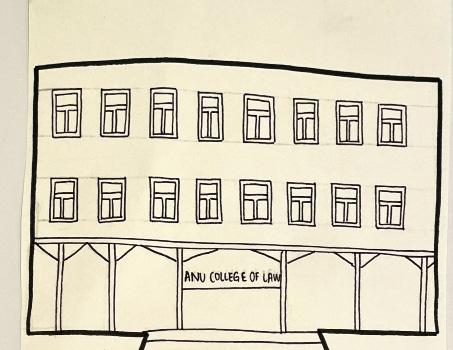
21) Parliament of Australia, Terrrorism Court Cases <http://www.aph.gov.au/About Parliament/Parliamentary Departments/Parliamentary Library/Browse by Topic/ TerrorismLaw/Courtcases> accessed 29 December 2022.

22) R v Mallah [2005] NSWSC 317
23) ‘Australia’, RSF (Report, 2021) <https://rsf.org/en/australia>
24) Suriname’, RSF (Report, 2021) < https://rsf.org/en/suriname>
25) Duffy, 335.

26) Ibid.
27) Australian Communist Party v Commonwealth [1951] HCA 5; (1951) 83 CLR 1, 187.
28) See e.g., Australian Capital Television Pty Ltd v Commonwealth (1992) 177 CLR 106, 37.

29) The Australian Capital Territory, Queensland, and Victoria.
30) Prevention of Terrorism Act 2005 (UK) c 2.
31) Human Rights Act 1998 (UK) c 42.
32) See especially Secretary of State for the Home Department v JJ [2006] EWHC 1623 (Admin) (28 June 2006); Secretary of State for the Home Department v JJ [2006] EWHC Civ 1141; [2007] 1 QB 446; Secretary of State for the Home Department v JJ [2007] UKHL
45; [2008] 1 All ER 613.

33) A Lynch, ‘Special Measures: Terrorism and control orders’ in Saul, above n 13, 519.
34) Australian Security Intelligence Organisation Amendment Act 2020 (Cth).
35) Australian Security Intelligence Organisation Act 1979 (Cth) s 34BB.
36) Ibid s 34BA, s 4.




37) Daniel Hurst, ‘Asio boss denies expanded powers could be used to target Black Lives Matter protests’, The Guardian (Article, 10 July 2020) < https://www.theguardian. com/australia-news/2020/jul/10/asio-boss-denies-expanded-powers-could-be-usedto-target-black-lives-matter-protesters>.
38) Hardy, Ananian-Welsh, and McGarrity, 32.

39) Harley Williamson, ‘Pride and prejudice: Exploring how identity processes shape public attitudes towards Australian counter-terrorism measures’ (2019) 52(4) Sage Journals.
40) Lucia Zedner, ‘Pre-crime and post-criminology?’ (2007) 11(2) Theoretical Criminology, 261.
41) Giorgio Agamben, State of Exception (The University of Chicago Press, 2005) 4.
42) P Hoffman, ‘Human Rights and Terrorism’ (2004) 26 Human Rights Quarterly 932, 933-4.
43) Ibid.
































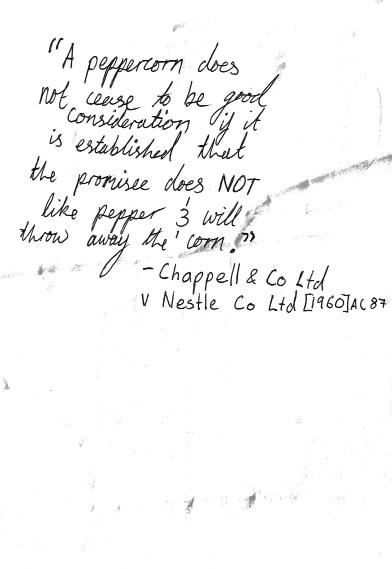




































































 Callum Florance Editor in Chief
Maximus Sandler Secretary
Callum Florance Editor in Chief
Maximus Sandler Secretary







 Adhina Jose Content Editor
Mel Megale Content Editor
Adhina Jose Content Editor
Mel Megale Content Editor










 Art by Rose Dixon-Campbell
Art by Rose Dixon-Campbell


 Art by Ella Mcgrath
Art by Ella Mcgrath



















































 Art by Ella Mcgrath
Art by Ella Mcgrath

 Pinocchio
Pinocchio







 By Chilli Pepper
By Chilli Pepper







 Art by Ankita Unnikrishnan: scene from Peppercorn Theme
Art by Ankita Unnikrishnan: scene from Peppercorn Theme
 ‘An Audacious Pair’ Art by Rose Dixon-Campbell
‘An Audacious Pair’ Art by Rose Dixon-Campbell












 Art by Ella Mcgrath
Art by Ella Mcgrath


 By Callum Florance
By Callum Florance












 Art by Ankita Unnikrishnan: scene from Peppercorn Theme
Art by Ankita Unnikrishnan: scene from Peppercorn Theme








































